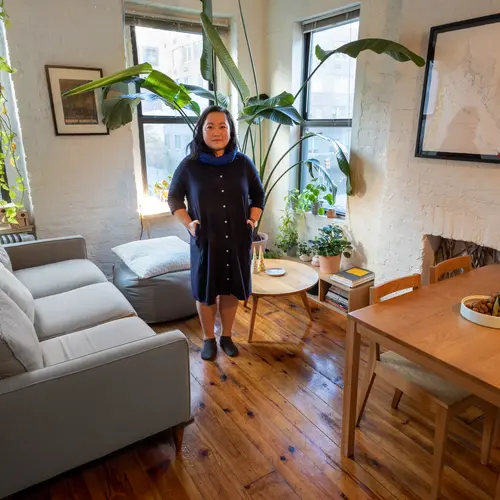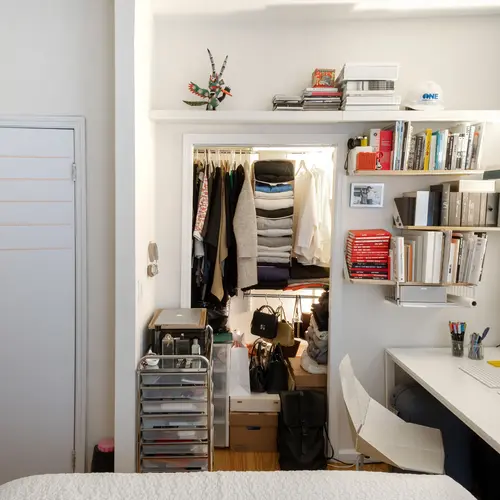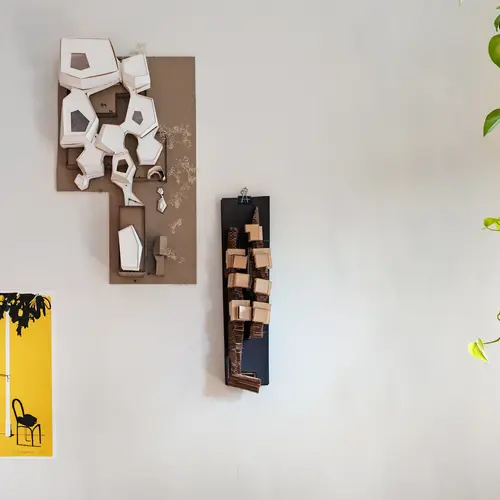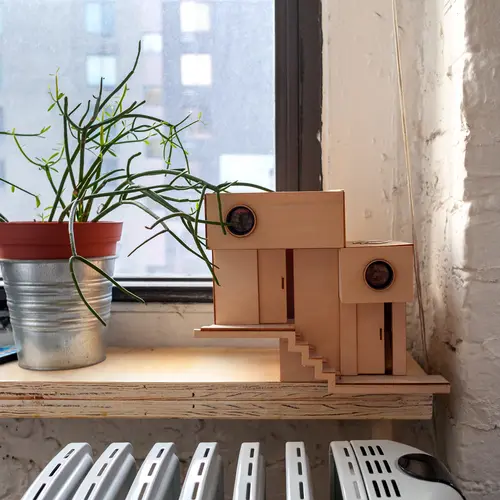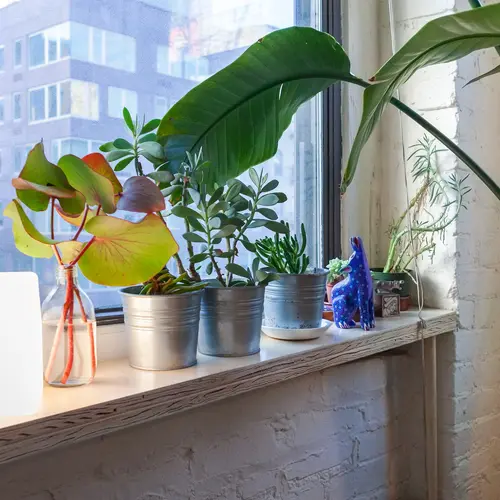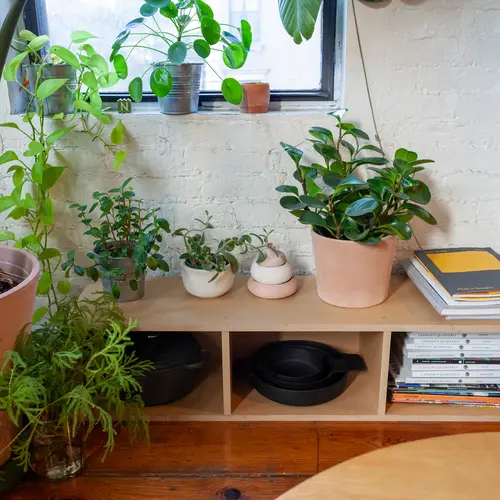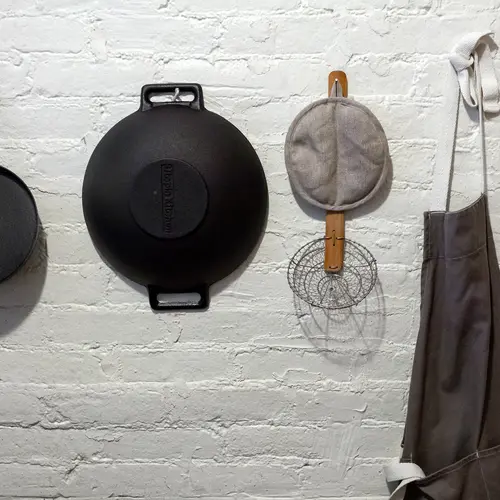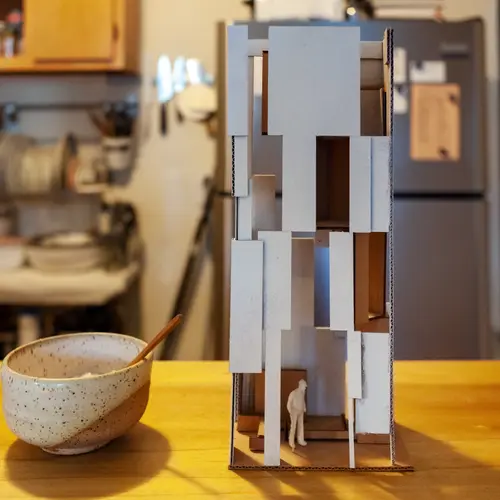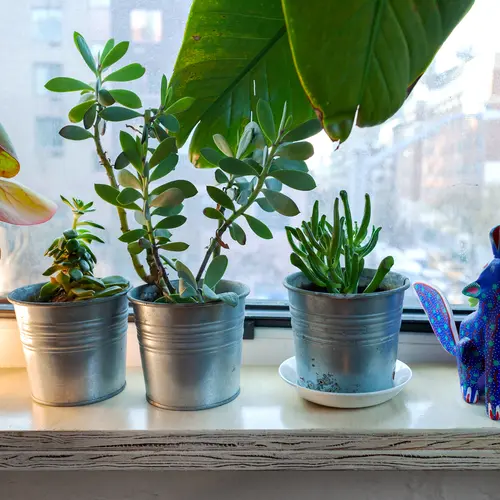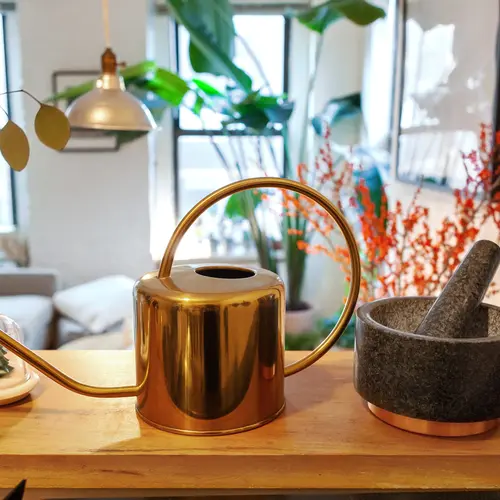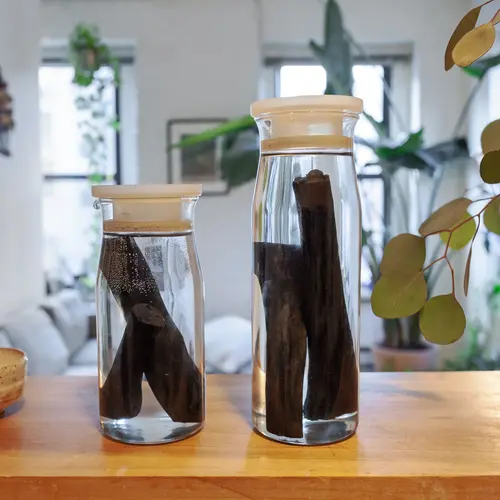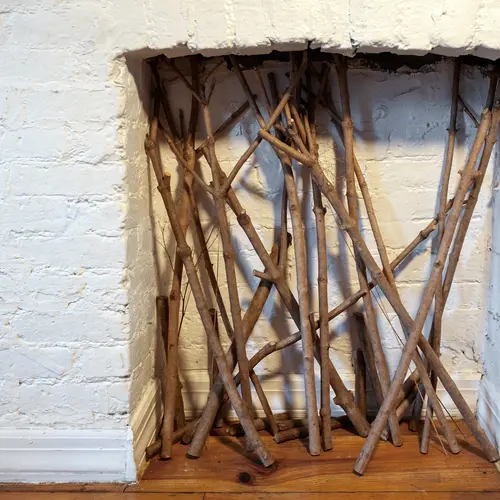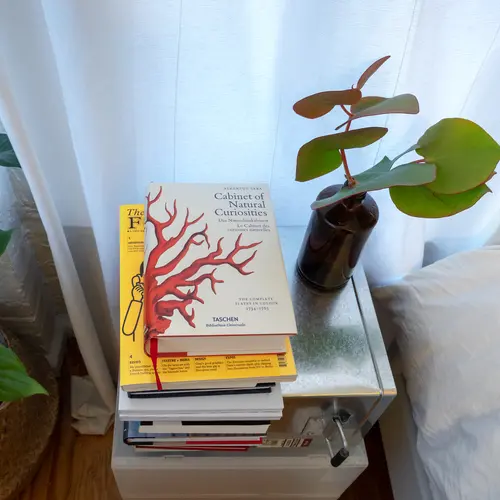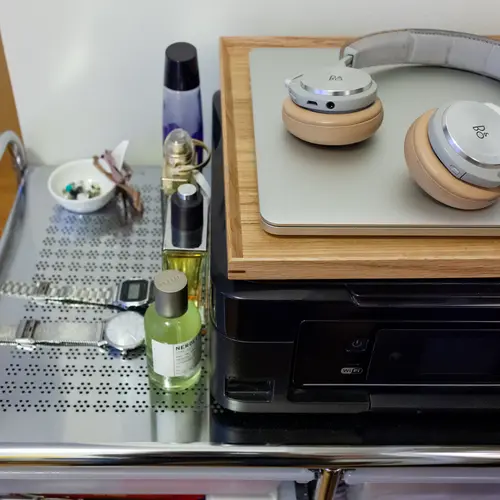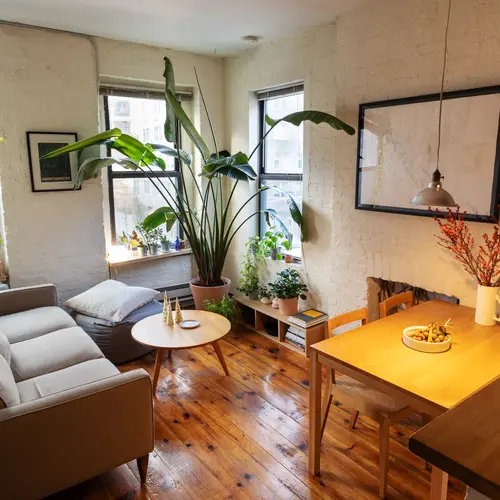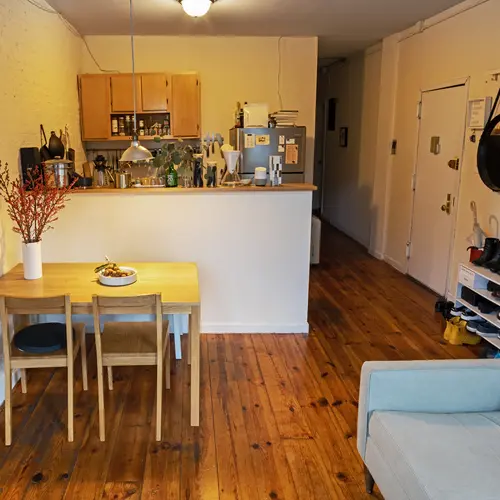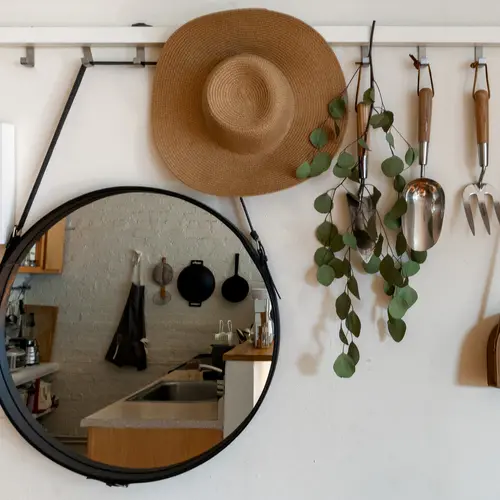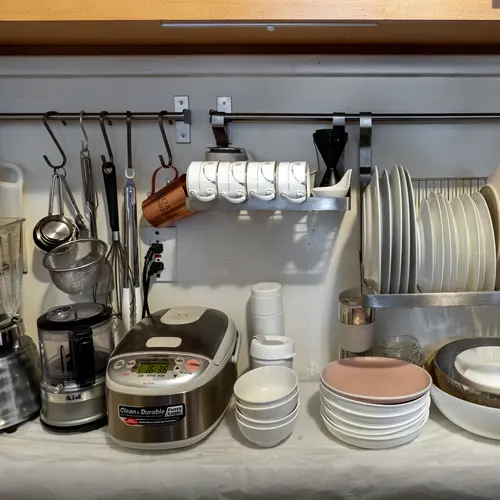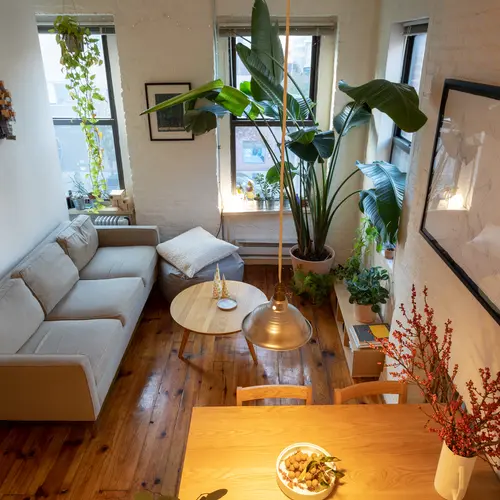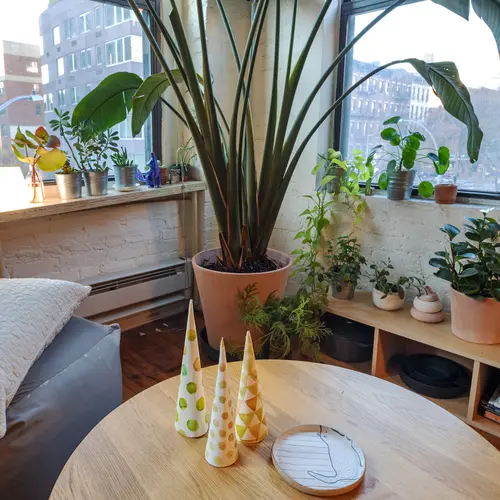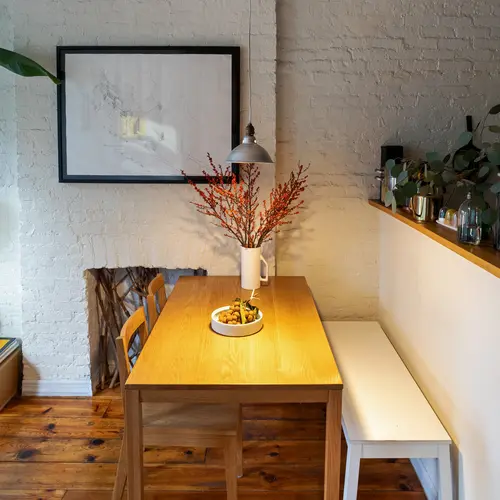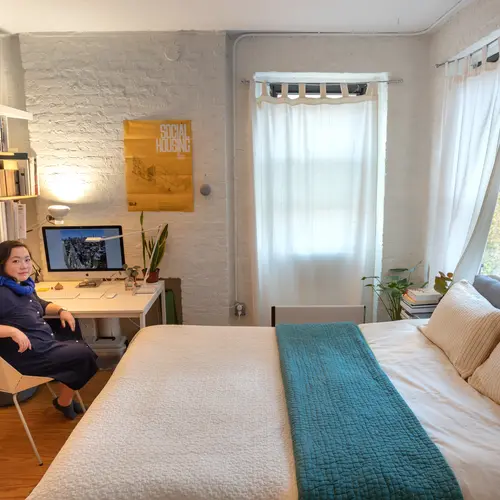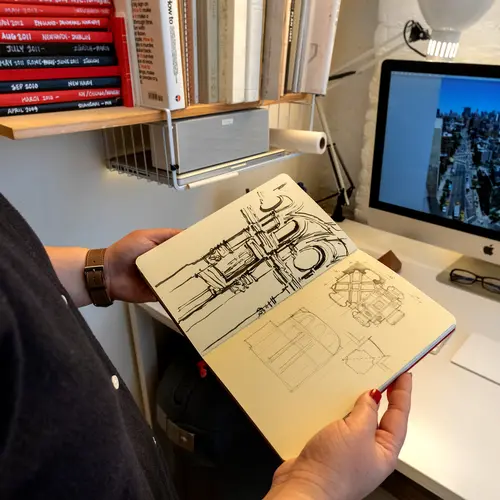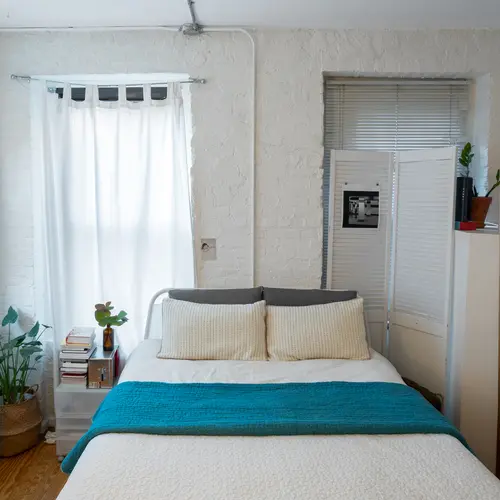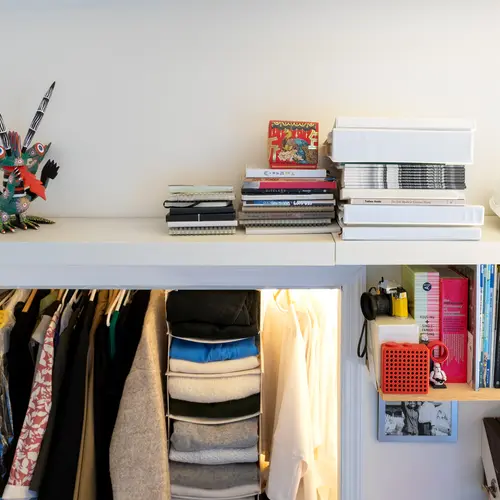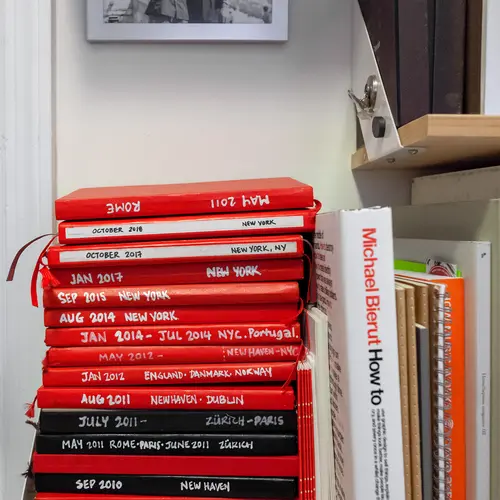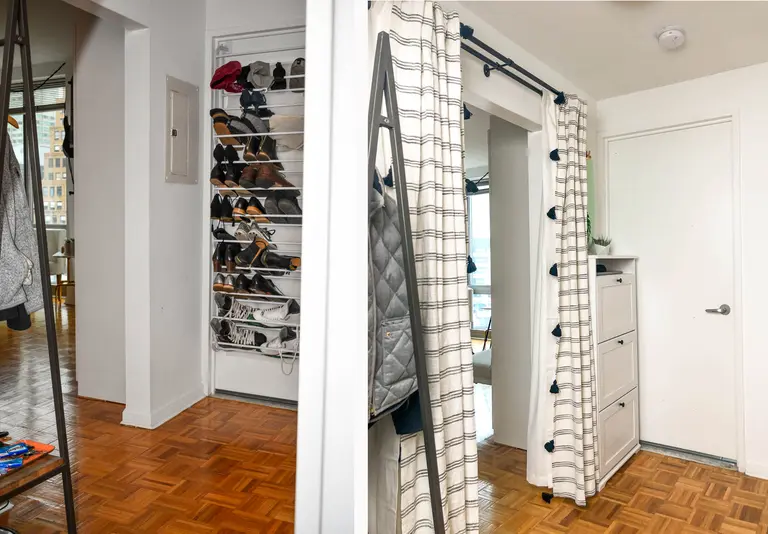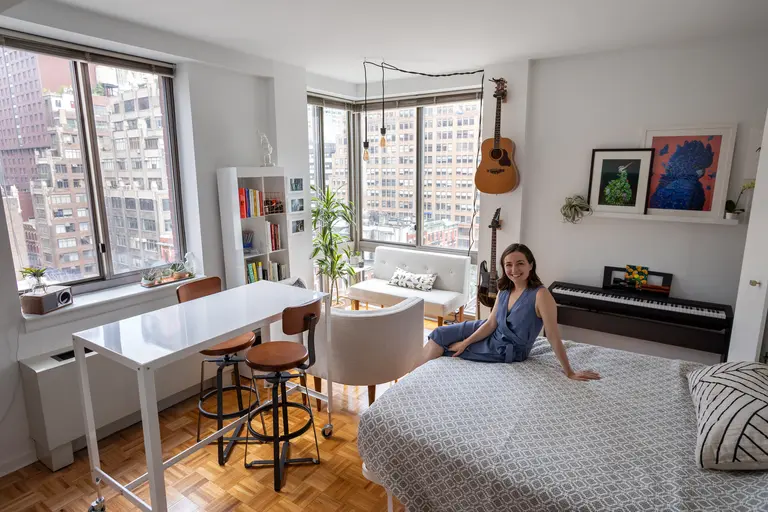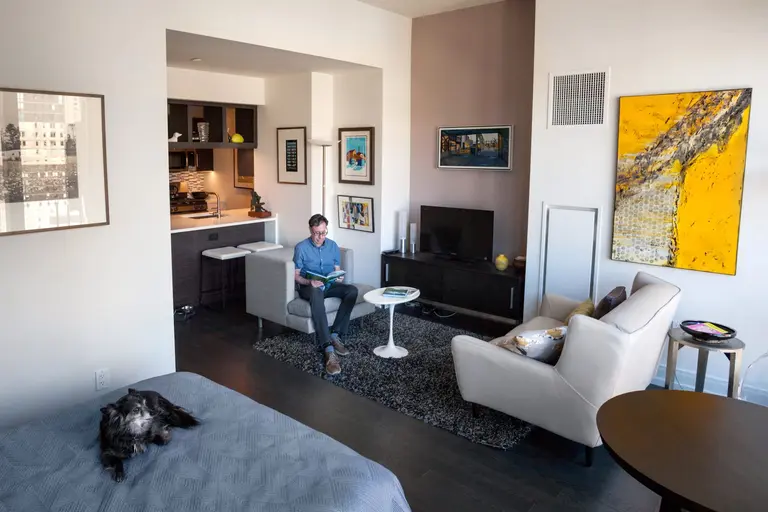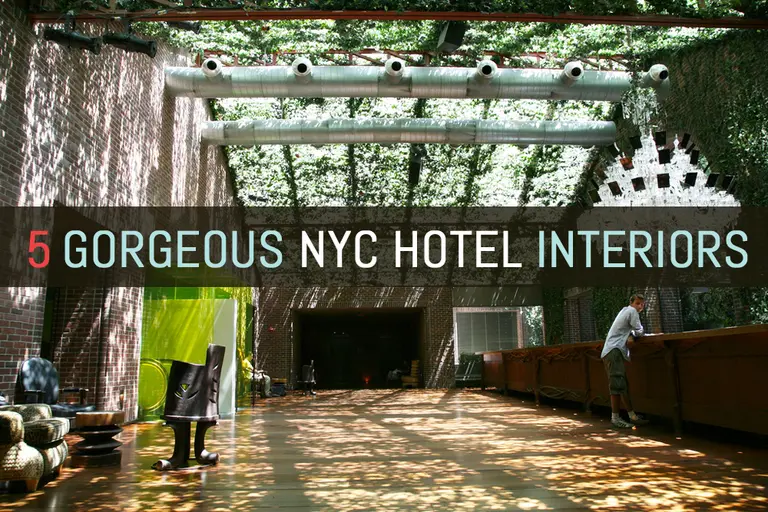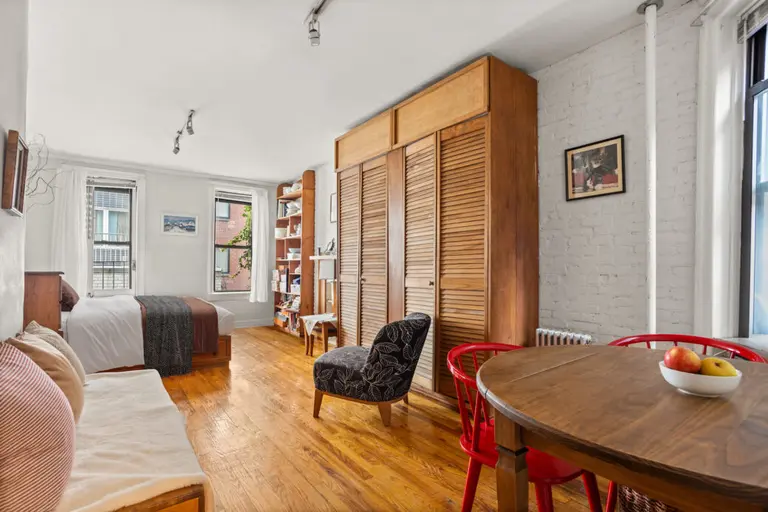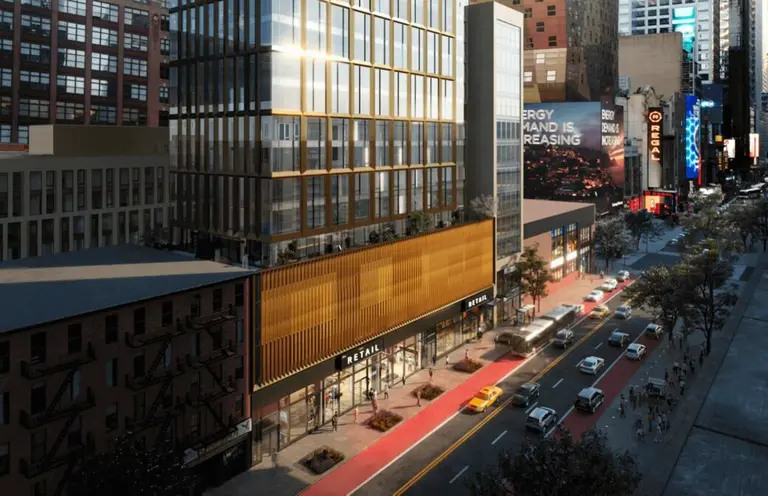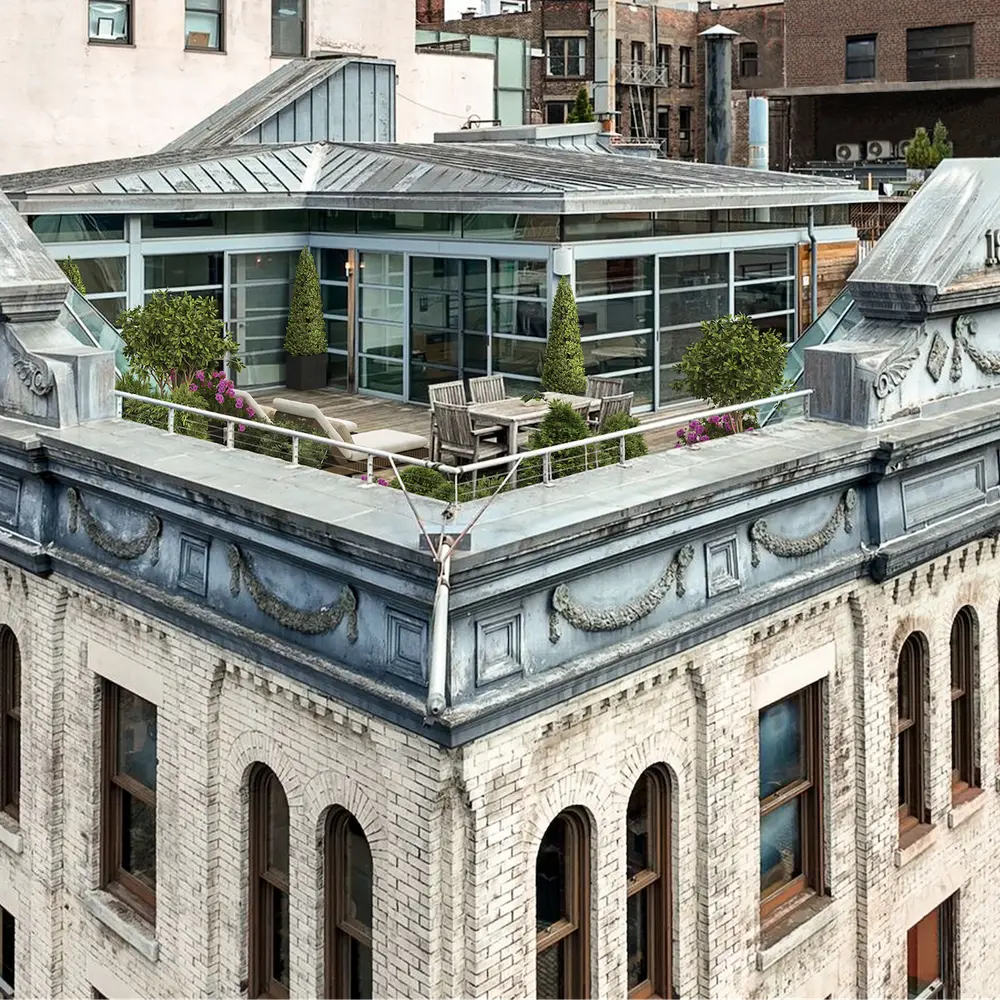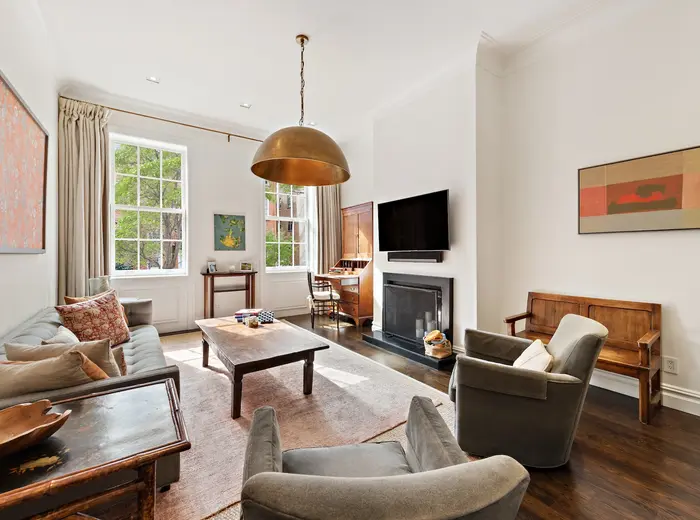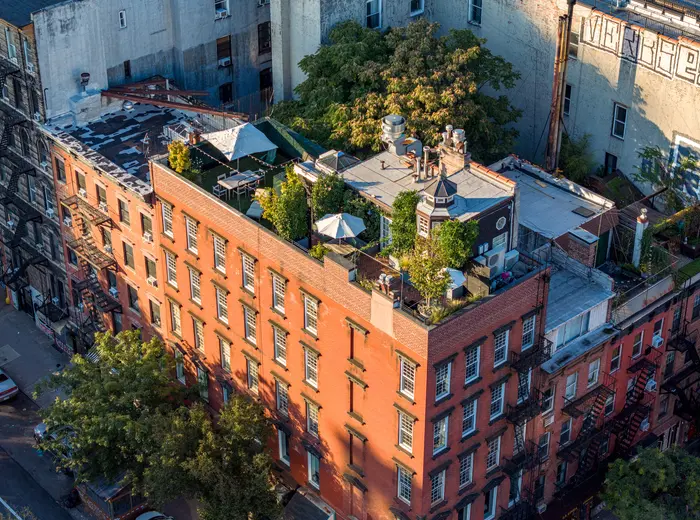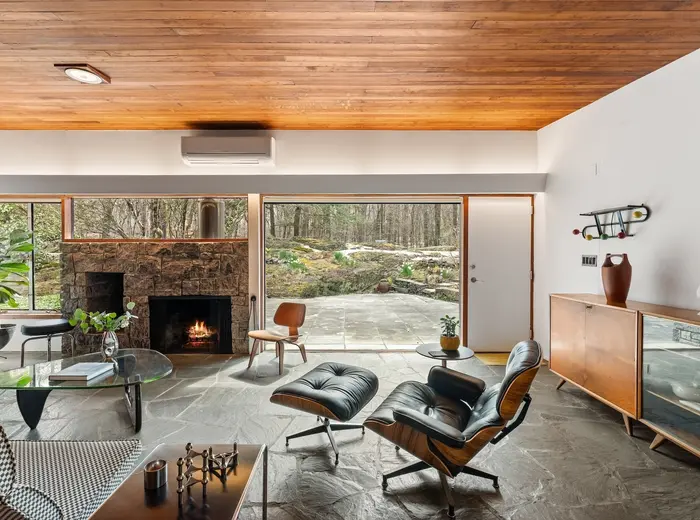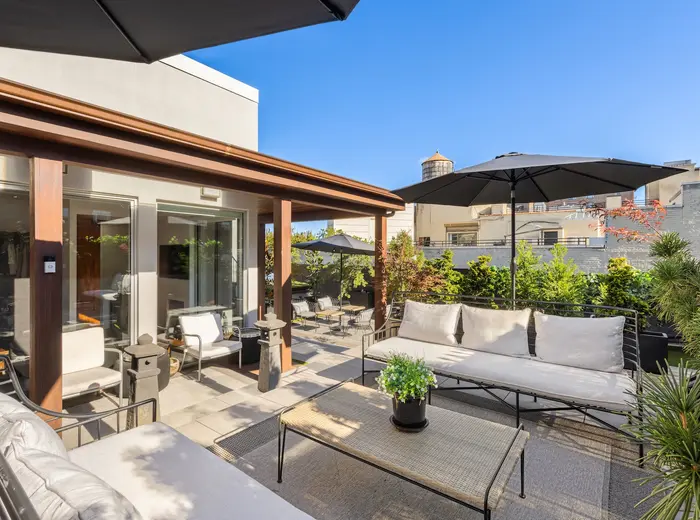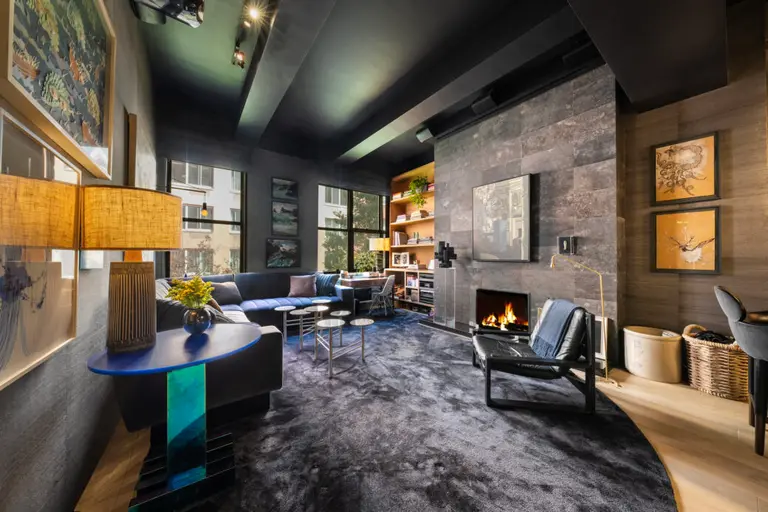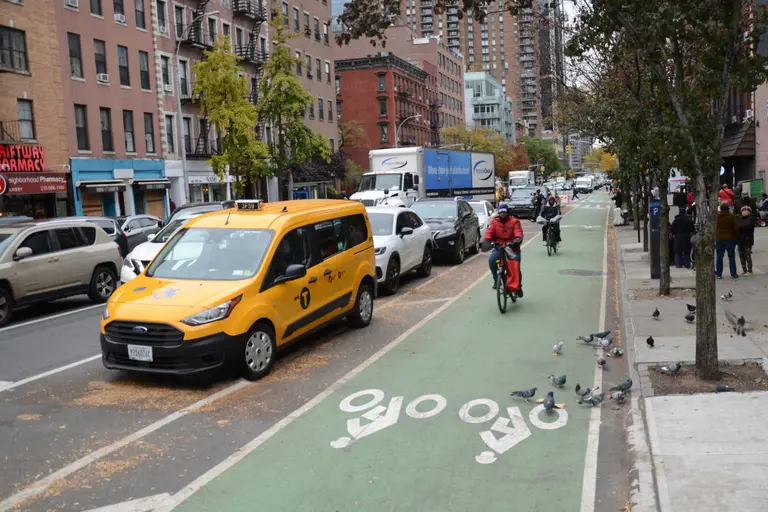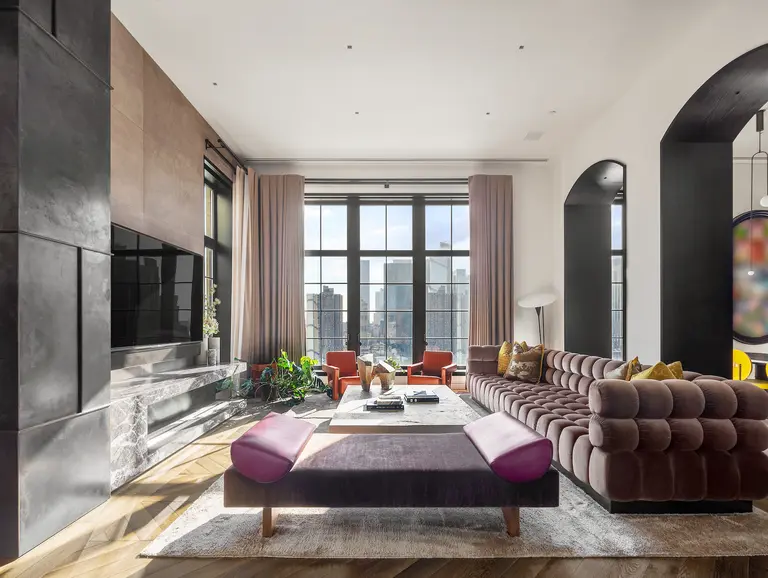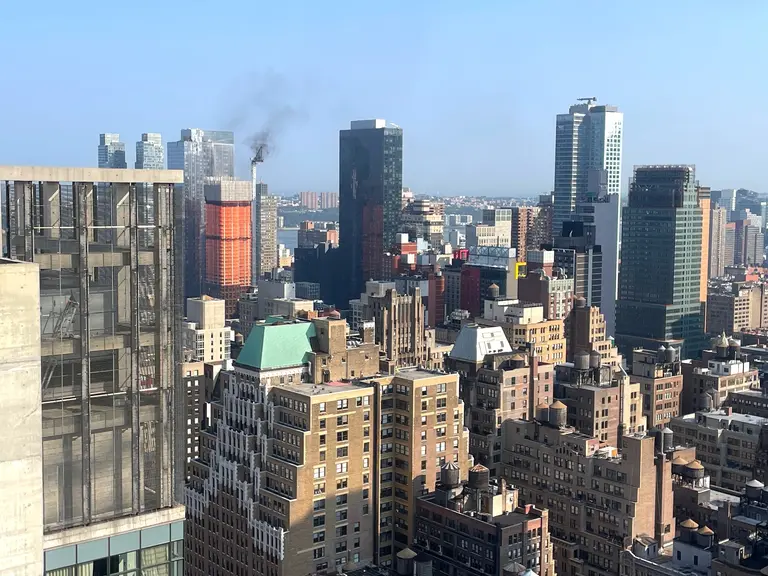My 500sqft: How an architect brought chic sensibility to her Hell’s Kitchen apartment
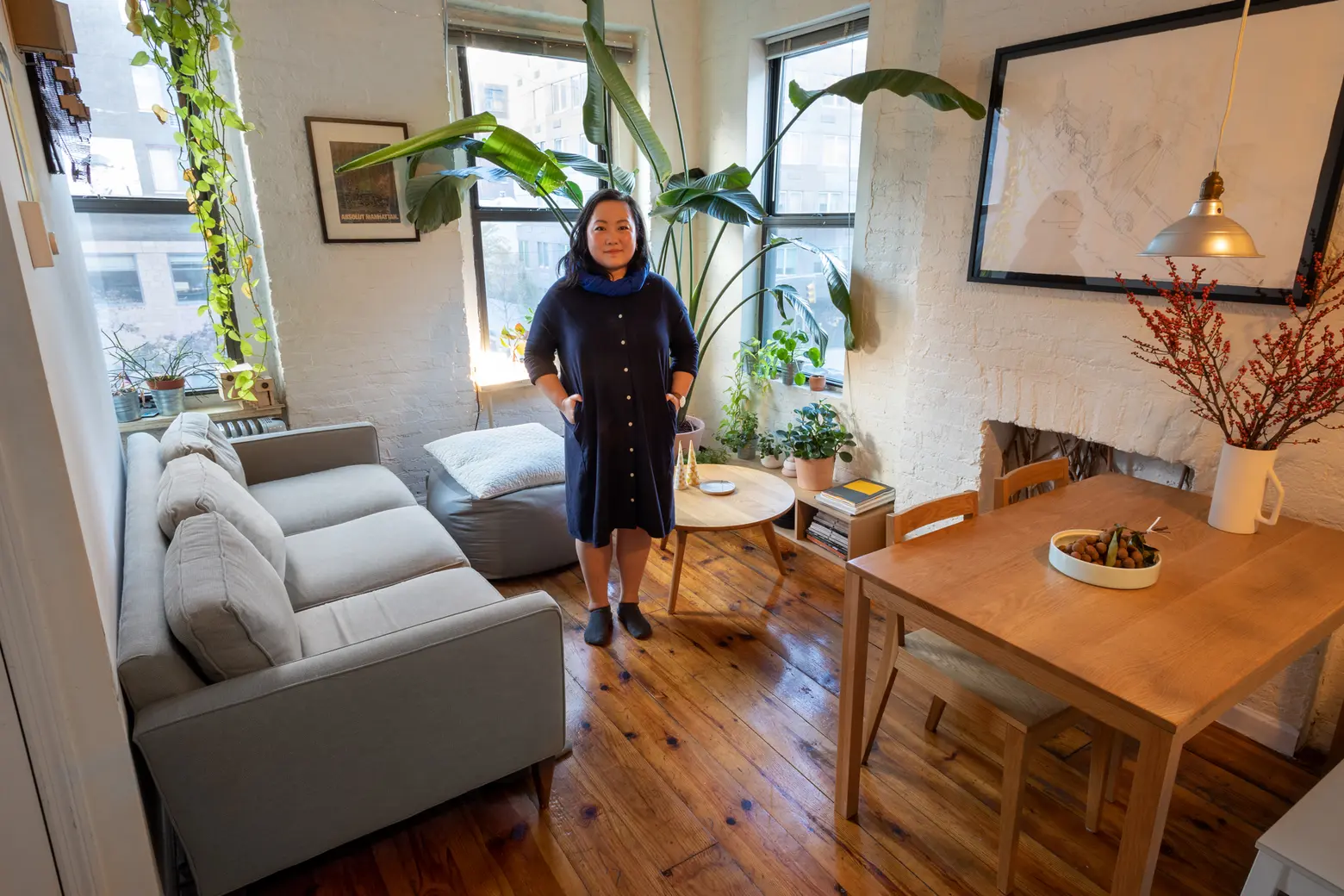
Our series “My sqft” checks out the homes of New Yorkers across all the boroughs. Our latest interior adventure brings us to architect and designer Nicky Chang’s Hell’s Kitchen apartment. Want to see your home featured here? Get in touch!
Shanghai native Nicky Chang is nothing if not accomplished in her field, having graduated from the Yale School of Architecture and worked for firms such as Skidmore, Owings & Merrill. But when she had a chance to combine her passions of architecture, interior design, and culinary arts, she couldn’t pass up the chance. Nicky is now the head of design and strategy at Junzi Kitchen, a fast-casual Northern Chinese restaurant founded on Yale’s campus with locations in Morningside Heights, Greenwich Village, and soon at Bryant Park.
When Nicky moved from New Haven to Hell’s Kitchen, she was downsizing by three times. Luckily, as she jokes, “architects have mild OCD tendencies when it comes to organization,” so she was able to maximize her 500-square-foot walk-up without sacrificing style. Ahead, take a tour of Nicky’s calm, chic, and cozy home and hear from her about her plant collection, love of cooking, and what it’s like to work in hospitality design.
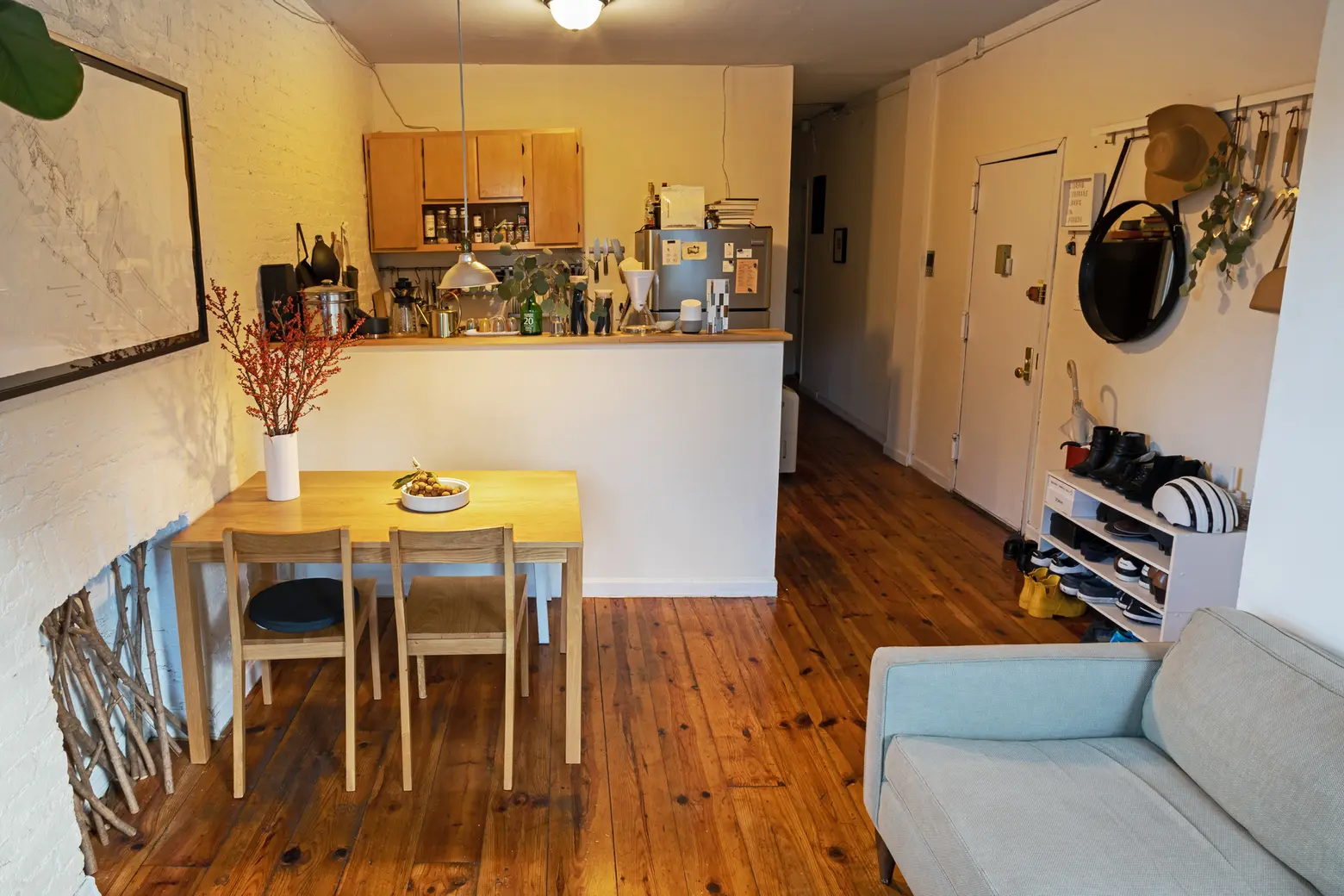
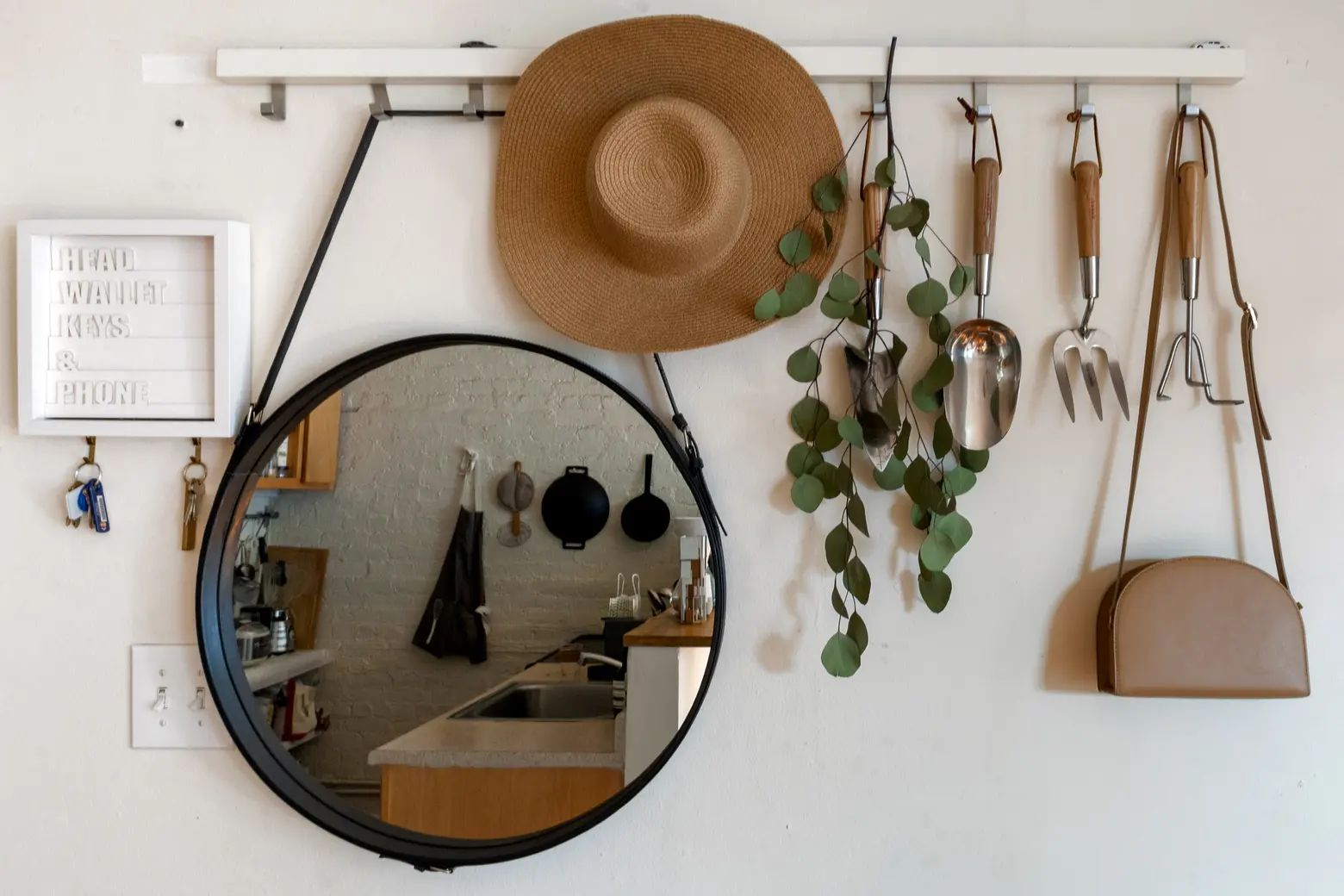
Prior to moving into this apartment six years ago, you lived in a much larger home in New Haven. Did you have to downsize a lot?
Yes, I used to live in a 1,200-square-foot, open-plan loft in New Haven–my walk-in closet was about the size of my bedroom now. I had to downsize a lot when I moved back to New York, but it was a good exercise to go through. I kept the queen-sized bed, but the two six-foot-long tables had to go immediately, so did a lot of architecture study models and supplies. Six years later, I still keep a donation box near my door, to be brought to the Salvation Army every Saturday morning.
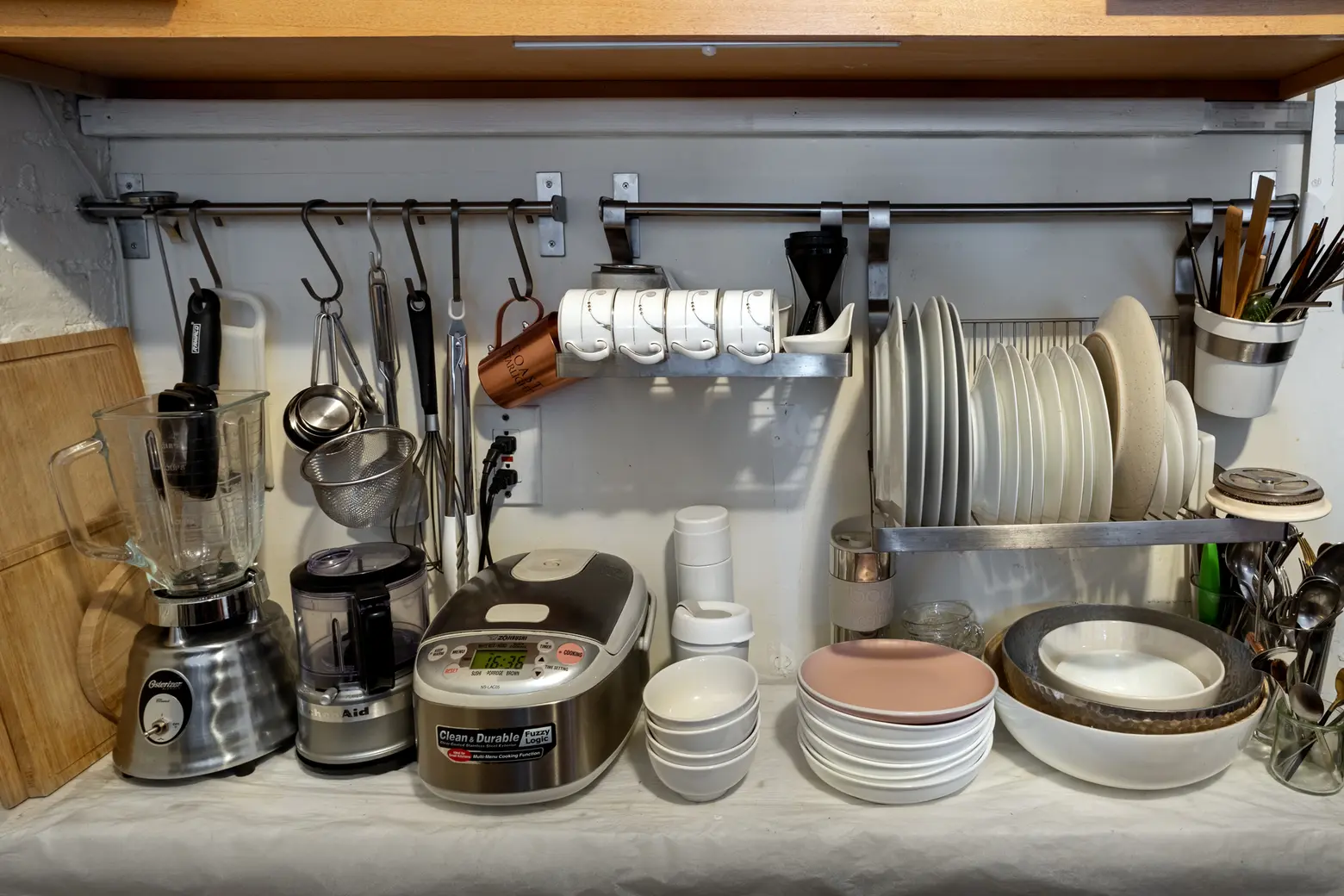
Did having an architecture background come in handy when configuring the space?
Architects have mild OCD tendencies when it comes to organization; over time, you really only keep the things you genuinely love and eliminate everything that doesn’t work perfectly. There was once this hilarious open letter to architects by a Princeton graduate student. In the letter she correctly pointed out that her doctor friend gives her drugs, and her lawyer friend helps her sue her landlord, but her architect friends are only good for telling her how many square feet her tiny apartment is. All jokes aside, I did measure out everything when I moved in, I had a floor plan, marked the floors with blue tape, and I knew exactly how everything fit before committing to any purchase.
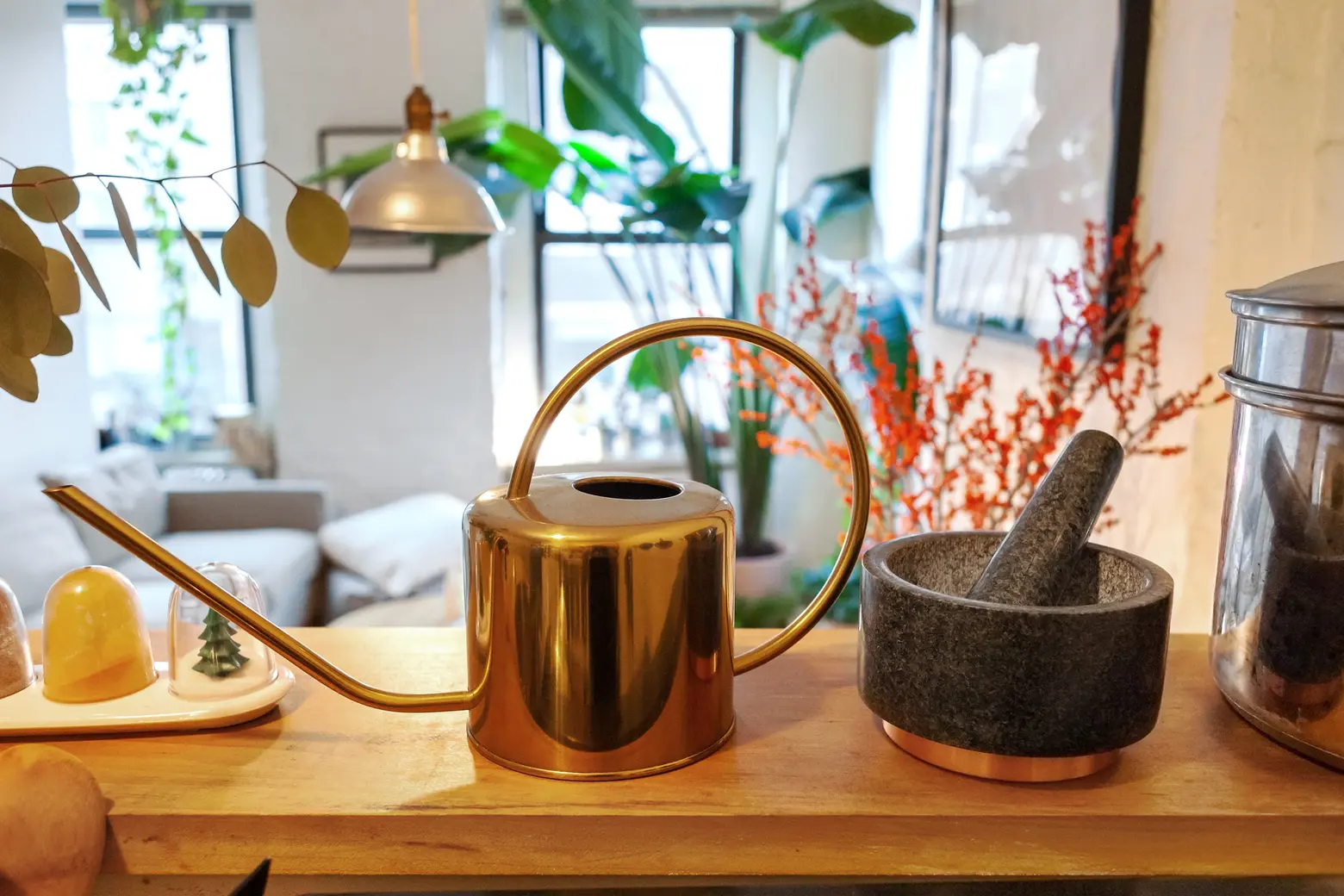
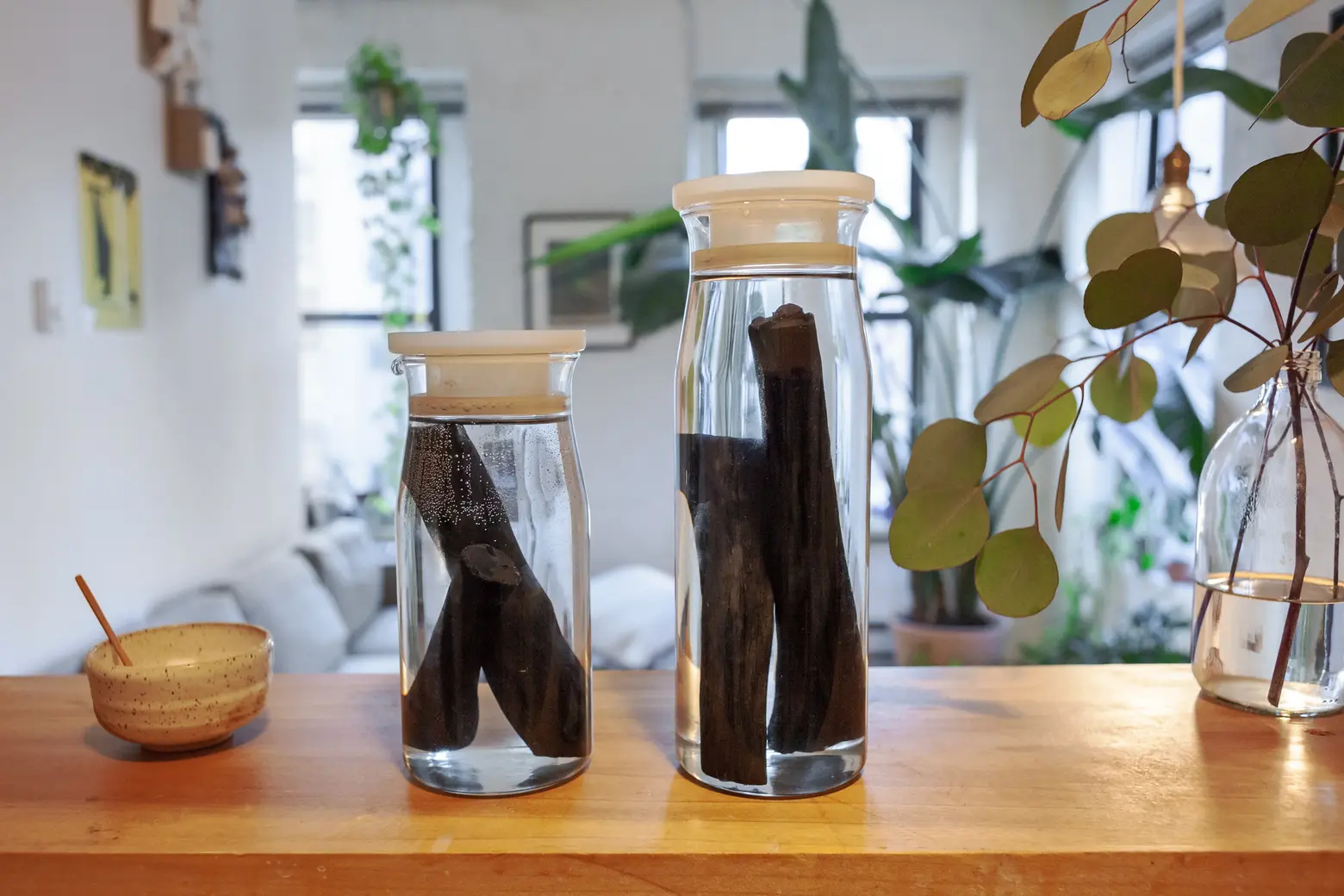 Nicky keeps charcoal to naturally filter her water.
Nicky keeps charcoal to naturally filter her water.
What are your favorite things about this apartment?
I have to say it’s the light. The apartment is a corner floor-through unit, so my living room gets northern and western exposures throughout the day–the plants are super happy here. My bedroom gets north and east sun which helps me wake up early in the morning.
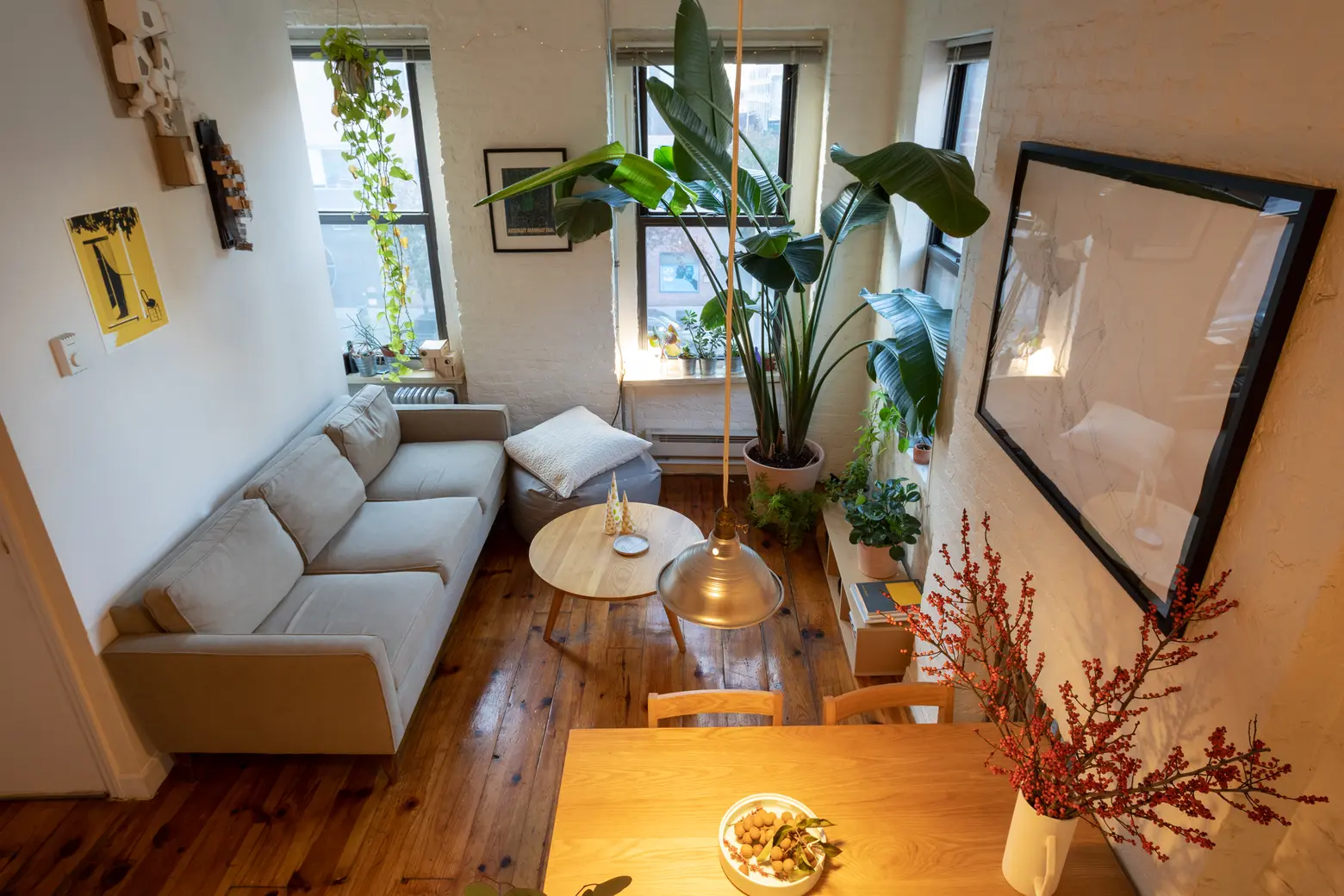
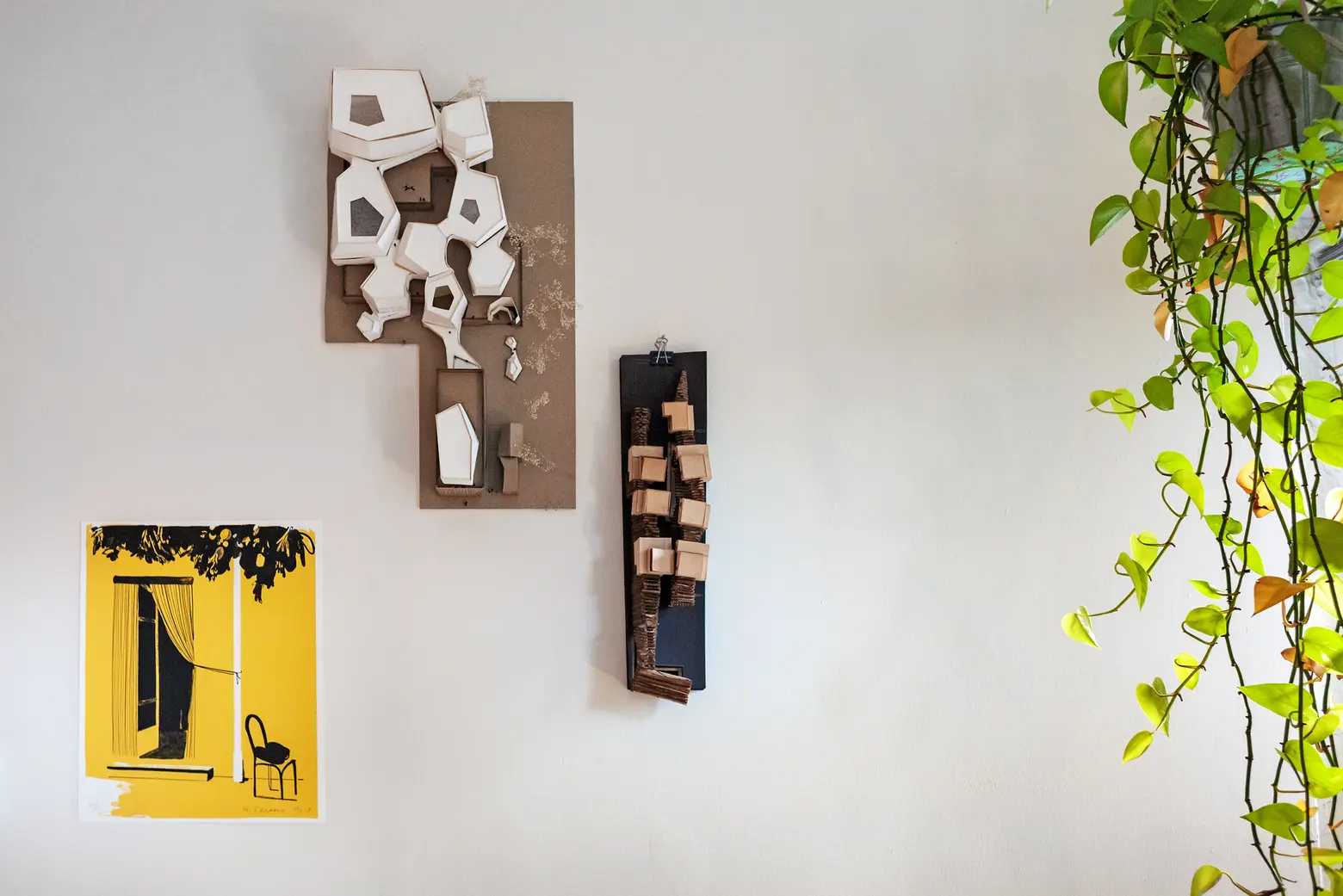 Nicky was only able to save about 10 percent of her architecture models from school when she downsized, but a few of her favorites hang above the couch.
Nicky was only able to save about 10 percent of her architecture models from school when she downsized, but a few of her favorites hang above the couch.
How would you sum up your design aesthetic?
I think I used to be more of a minimalist, lots of black and white, only clean lines, Ad Reinhardt and Agnes Martin. Now I tend to keep a few eclectic things around, like those colorful wood carvings from Mexico, or this bright yellow print from Christoph Niemann. As long as the objects hold meaning and bring you joy, they don’t have to be a designer piece.
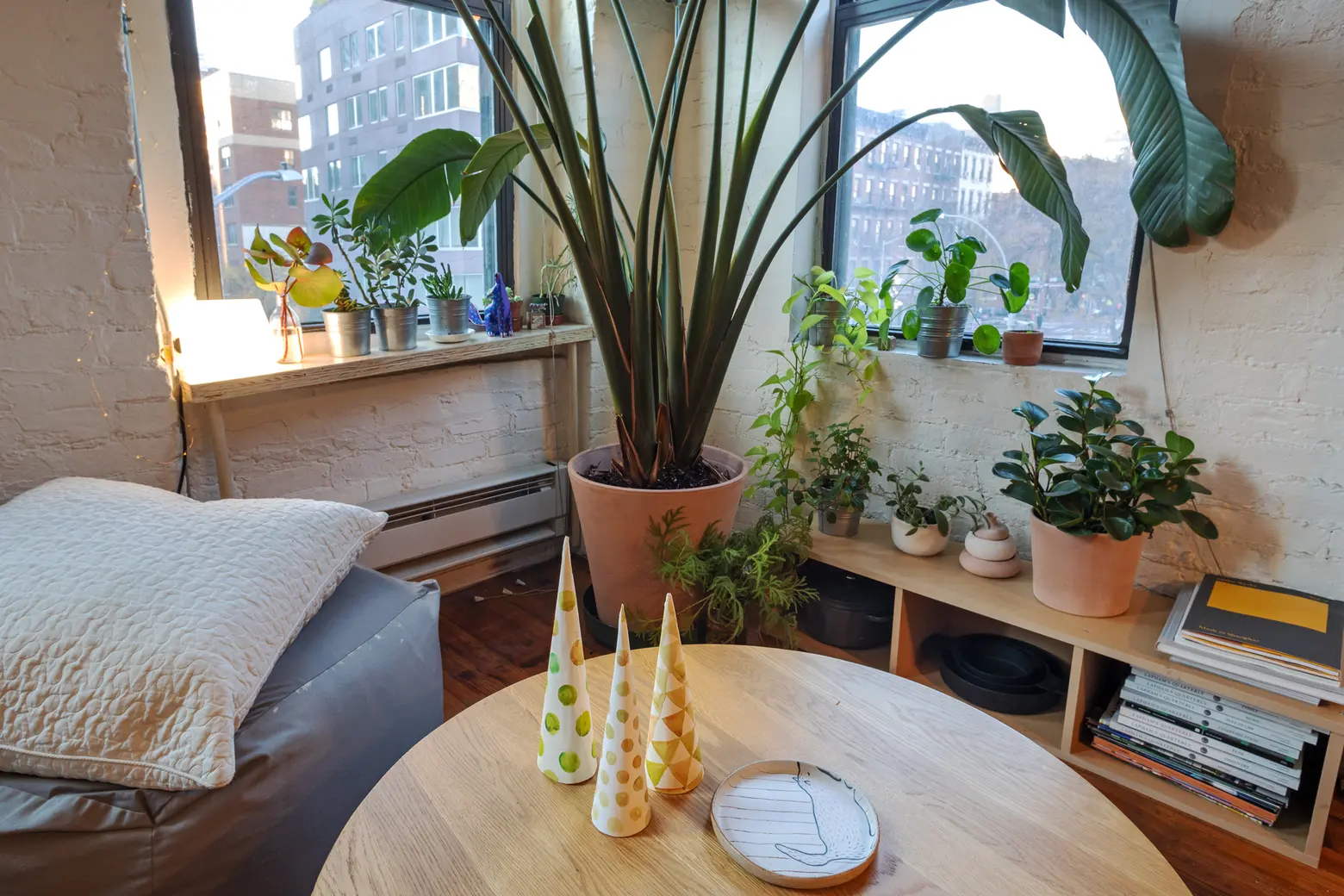
You grew up in China, spent some time working in Shanghai, and studied abroad in Paris. How did your international background influence your design choices?
It’s very important to live in different places and see how people live in those places, especially when you are a student on a budget. When I was studying in Paris, I was 20 years old. I lived in the “chambre de bonne” at the top of a 250-year-old building in Saint Germans. The bathtub was right next to the stovetop, the drawing table hovered over the twin bed, and when you stood up, your head would be poking out of the dormer window, from which you could see Luxembourg Garden. And I loved that tiny room at the summit of a seventh-floor walk-up; it was the perfect education for a young architect and beginner minimalist. In Shanghai, from a German architect, I inherited a converted loft in a historic “lane-house” at the heart of the French Concession. New York feels like another iteration of those experiences.
The Chinese have a saying “大隐隐于市”, which loosely translates to “the highest form of retreat to is finding serenity amidst chaos”. Paris, Shanghai or New York, the city is already so full of life, sometimes overwhelming so. It’s important to keep a simple and comfortable home so you can retreat from within.

We love your plant collection! When did you start bring greenery inside?
I used to live with a School of Forestry guy at Yale and he was kind of a tree expert. From him I learned how to love and take care of plants. And when I moved back to New York, I brought some of our houseplants with me. The collection continues to grow from there.
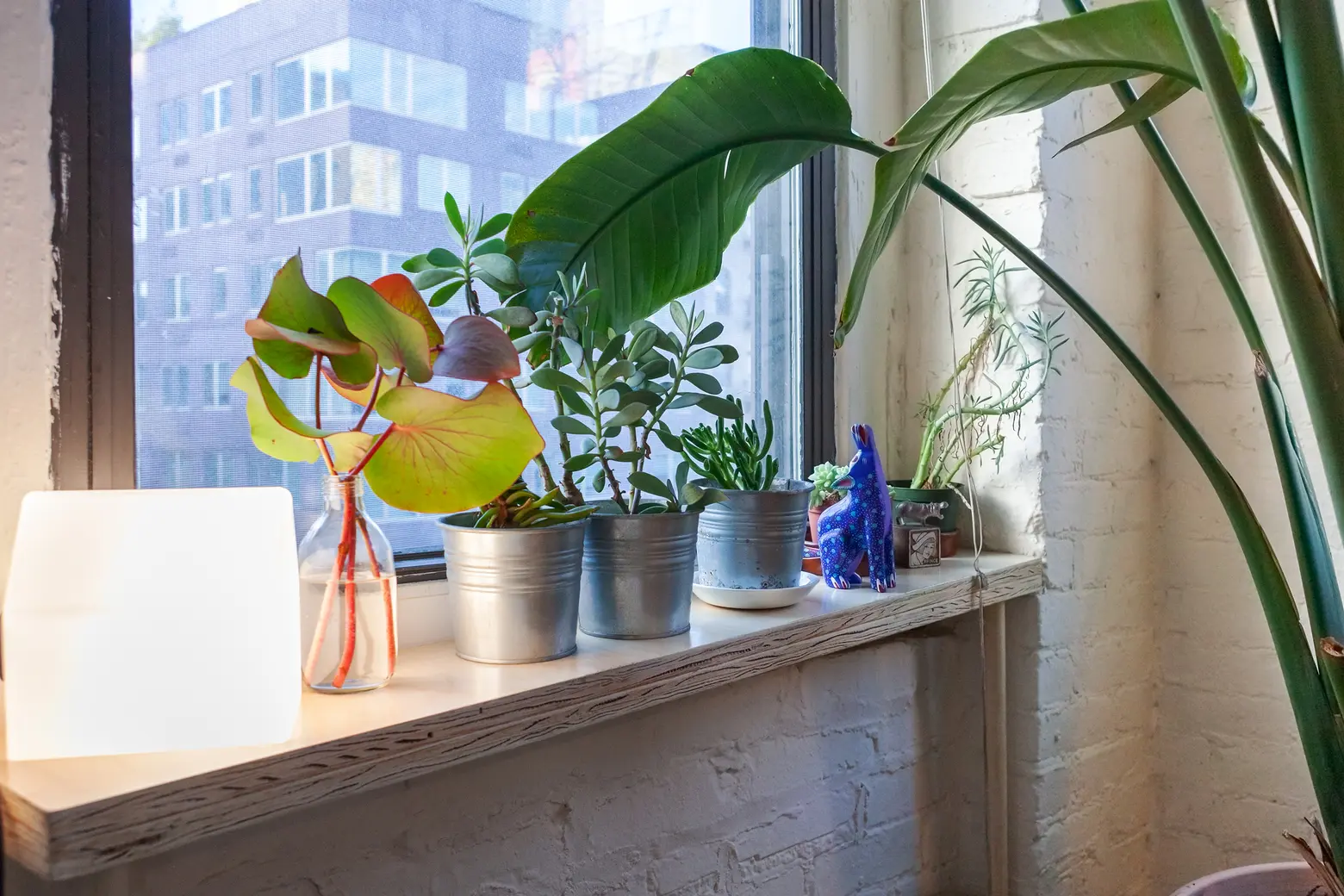
Where do you like to shop for plants?
Junzi headquarters is at the heart of the Flower District in Nomad, so I’m dangerously close to the Dutch Flower Line and I probably spend way too much money at Noble Plants on 28th Street. Ched the owner is this eclectic old man with incredibly good taste for Spanish guitar. If you hate carrying plants on the subway, I recommend our friends over at Rooted. They specialize in houseplants and would deliver to your house or office.
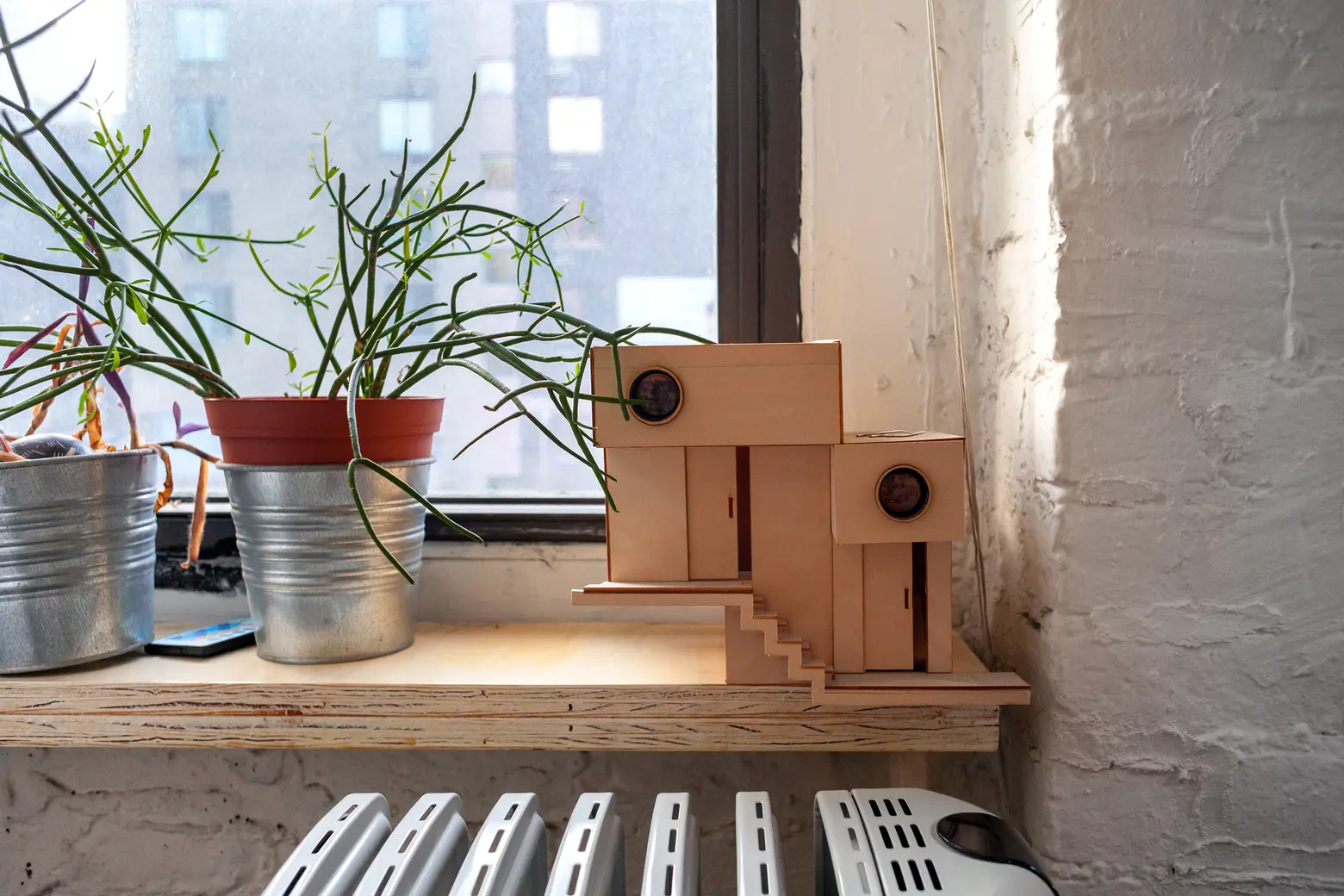
Hell’s Kitchen sometimes gets a bad rap for its proximity to Times Square. What do you say when people ask you about tourists in your neighborhood?
It’s true there are a lot of tourists between Times Square and the cruise lines off Pier 92, but honestly, I don’t notice them anymore–my brain must have tuned them out. There’s this side of Hell’s Kitchen that is actually very quaint; my neighborhood is filled with lots of families, little cafes, playgrounds, and community gardens. Especially here close to 10th and 11th Avenues, the streets are lined with brownstones and beautiful ginko trees. The Hudson River is only two blocks away, and the sunsets are super pretty.
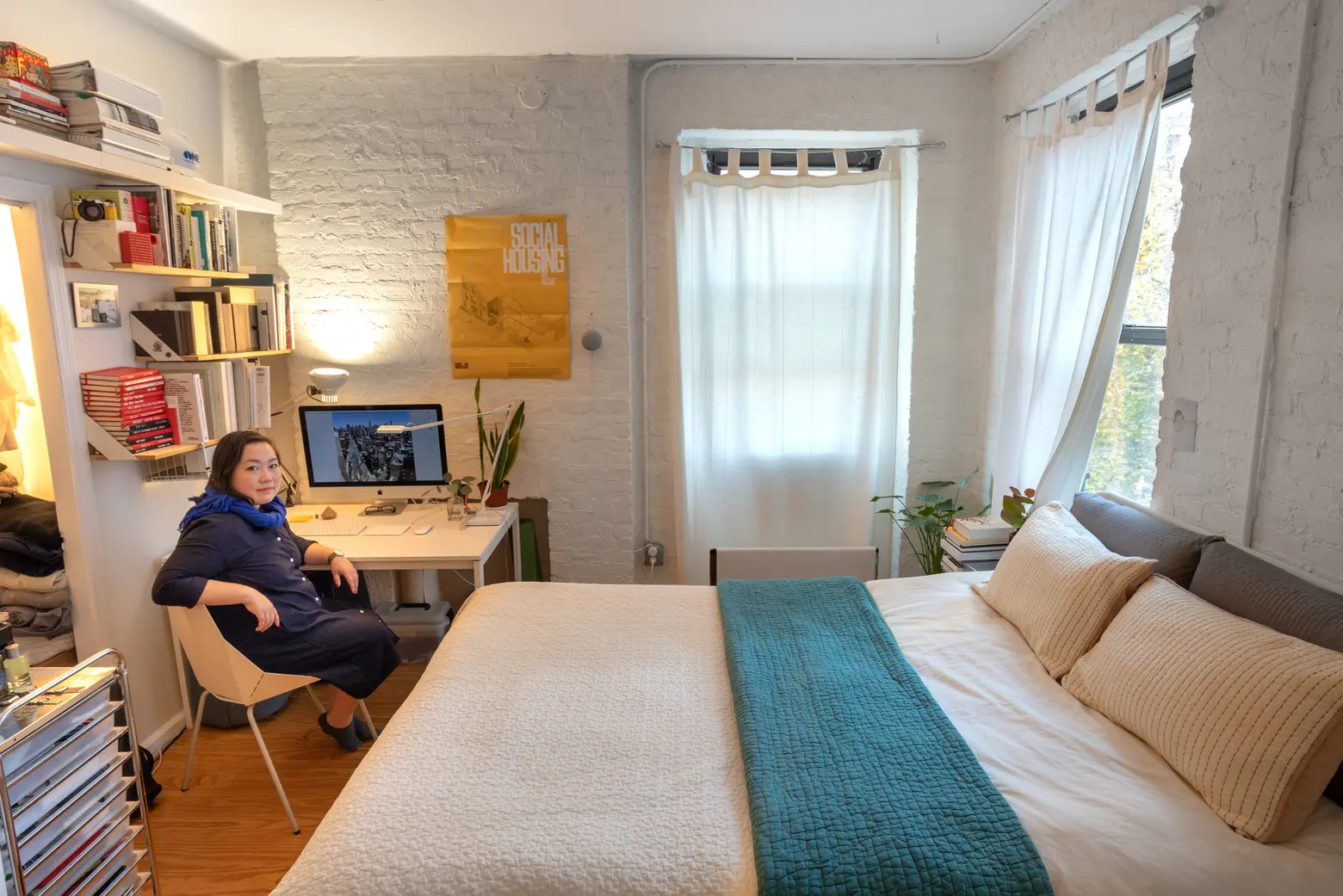
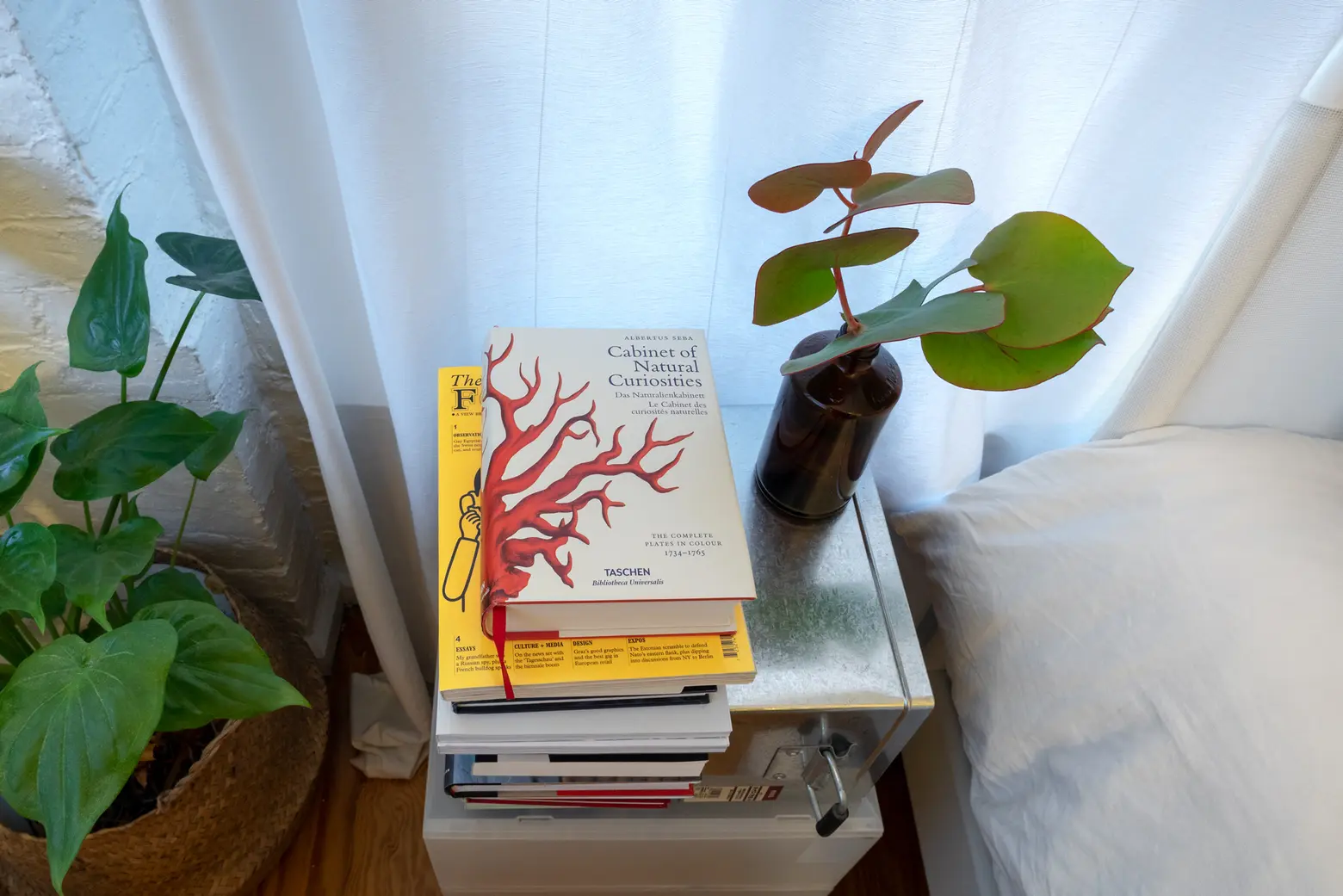
What are some of your favorite local spots?
Sullivan Street Bakery has a factory on 47th and I’m practically there every Saturday morning. The Jolly Goat has great coffee. Toto’s Ramen on 51st is all you need to survive the winter.
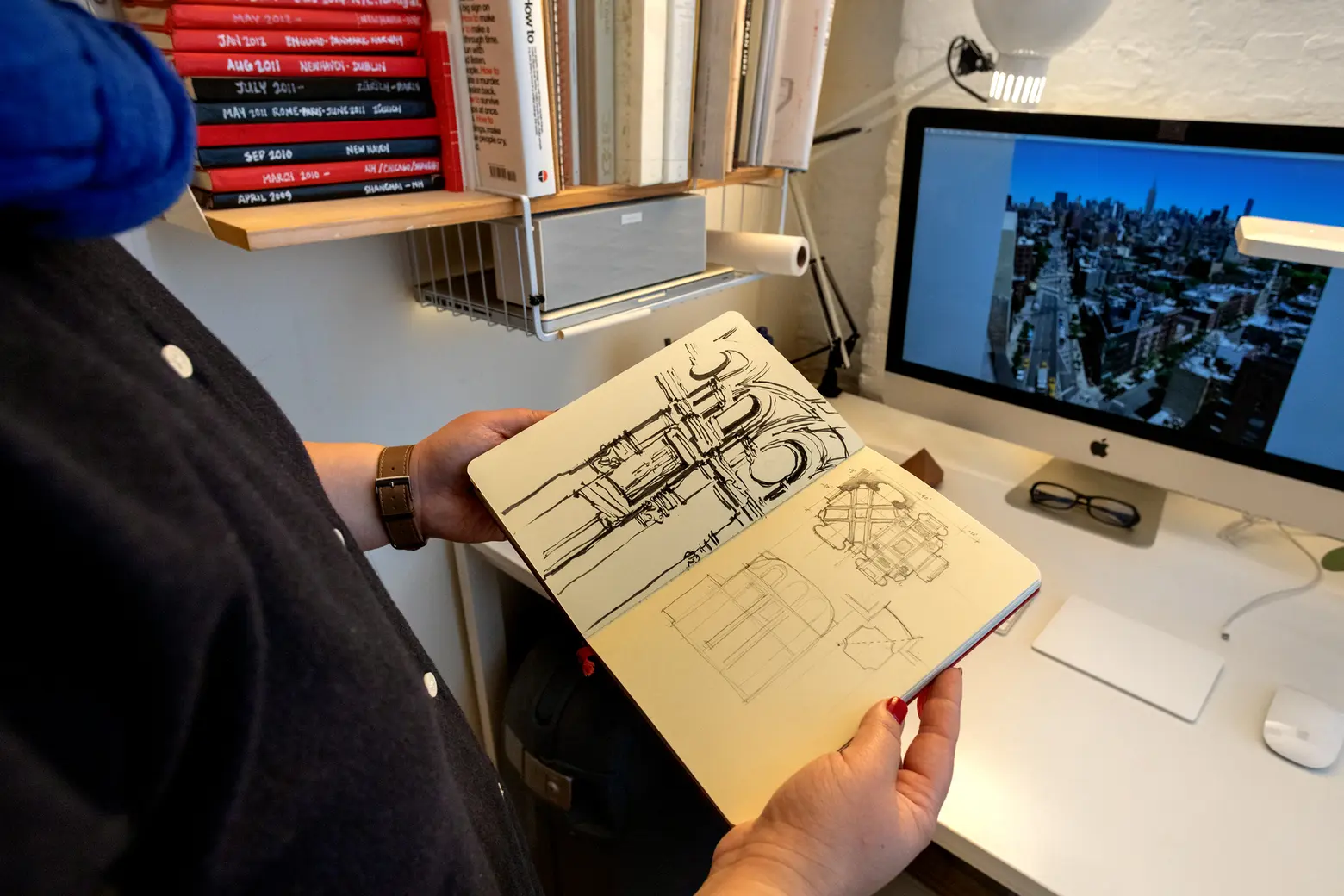
Tell us how you got involved with junzi. What drew you to the company?
I met Yong and the team through junzi’s architect Xuhui. Xuhui and I co-organize this young architects forum in the city called APT. One day after an evening presentation, Xuhui invited me to see the then-under-construction junzi store at Columbia University. In the half-finished kitchen between wrapped equipment and left-over tiles, Yong shared with me the vision of updating what people know about Chinese food in America, by making delicious and nutritiously balanced everyday Chinese home food with everyone. The rest is history.
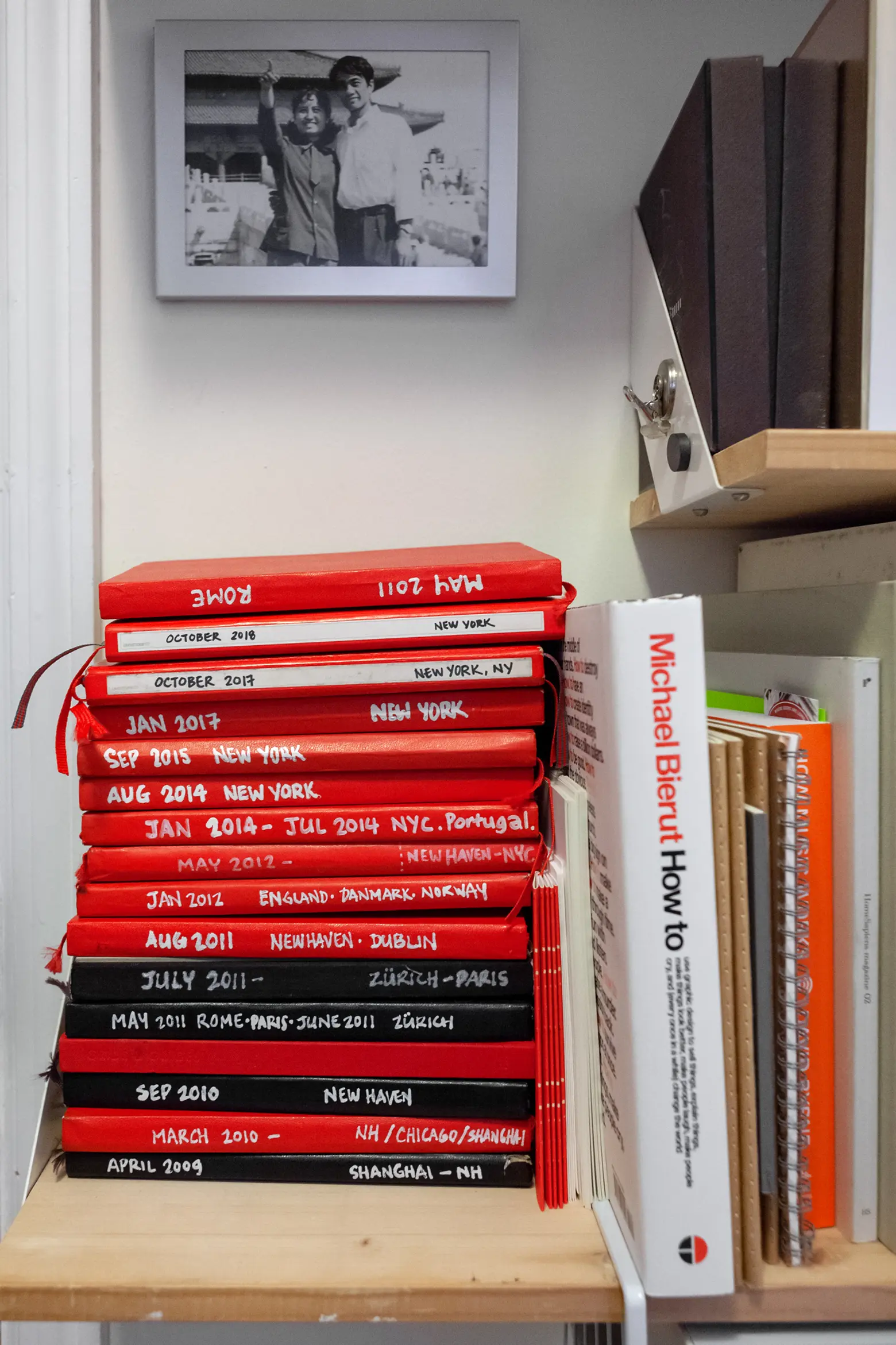 Whenever she travels, Nicky brings a sketchbook to draw and write down her ideas. She’s been keeping them since 2007, and they’ve survived several international moves!
Whenever she travels, Nicky brings a sketchbook to draw and write down her ideas. She’s been keeping them since 2007, and they’ve survived several international moves!
Previously, you worked for architecture firm SOM. What has it been like transitioning from a huge firm with internationally recognized buildings to a more local, small team?
My work at SOM was primarily tall buildings and five-star hotels–Grand Hyatt, Marriott, Andaz. My last project before I left was the Waldorf Astoria on Park Avenue. SOM New York has the best teams to be part of and it was an incredible experience working with some of the most high-profile projects. A big firm like SOM provides the designers with a global network of professional support–wherever you go and whatever you are working on, there are always the most experienced experts to help guide you. I also feel most lucky to have discovered hospitality design as my passion and expertise during my time at a big firm.
On the other hand, the corporate structure and decades of legacy could mean that change would have to happen incrementally. Now at a hospitality startup like junzi, with a small but robust team, we are actually building a legacy from the ground up, and that is very exciting. We are growing very fast–we tripled in size since I joined a year ago, and we are going to open our fourth store right next to Bryant Park. Part of the reason why we can evolve so rapidly is precisely because we are local, we are small, and we have built our own team to bring forward innovation and change. As Head of Design and Strategy, I feel truly privileged to work with our team of extremely talented and dedicated designers, business intelligence and data scientists, our chef, and food designer, and every restaurant operation crew member.
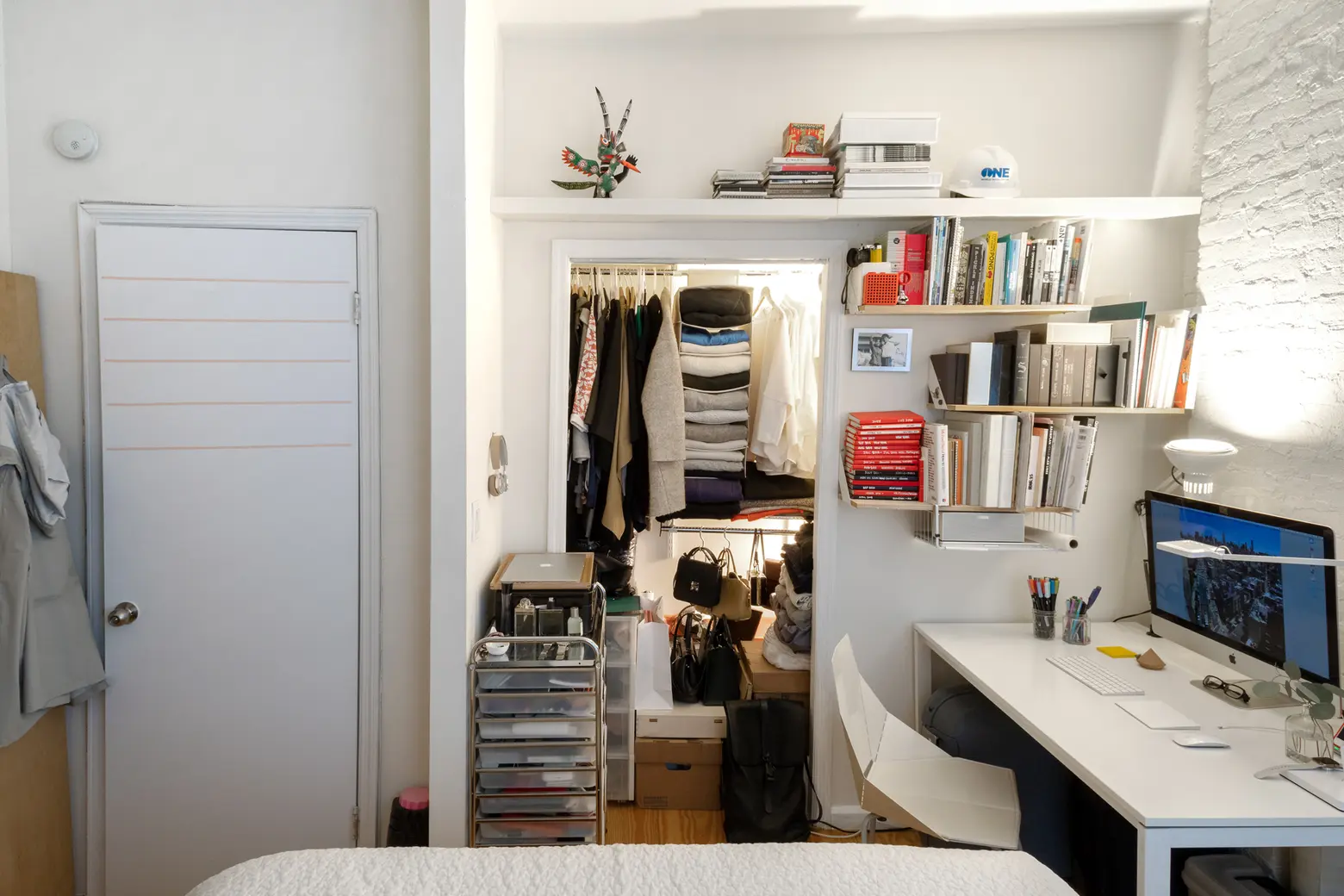
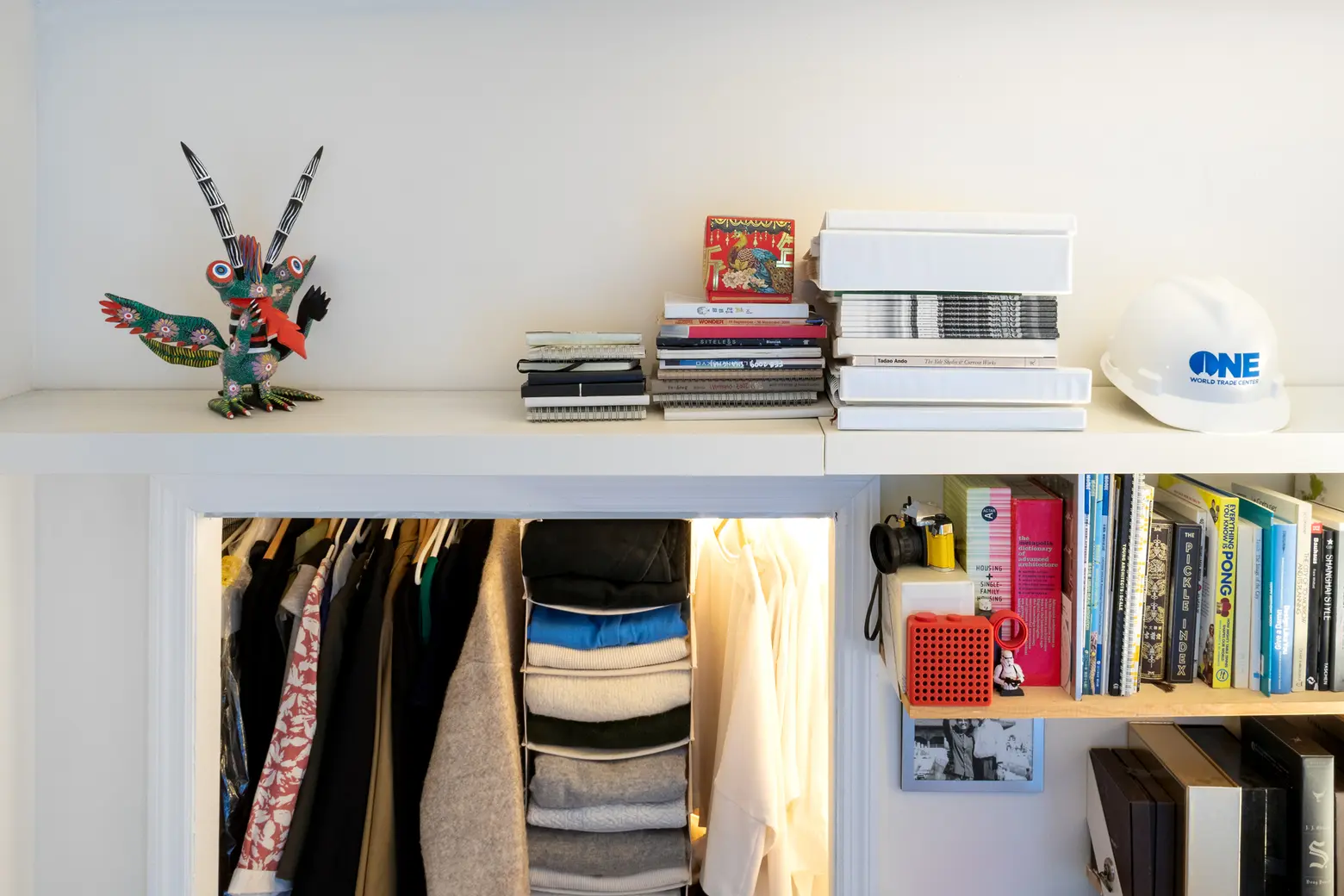 When Nicky found this sculpture in Mexico she thought it was a chicken, but it’s actually an alien.
When Nicky found this sculpture in Mexico she thought it was a chicken, but it’s actually an alien.
What is something you think most people don’t realize about restaurant design?
Today’s hospitality design is about elevating the holistic brand experience, both for our guests and our crew members. Most people don’t know the front of house vs. back of house ratio is usually around 1:1, which means about half of the resource and design consideration is invisible to our guests. Good design should make everyone’s life better, no matter whether you are on this side of the counter or behind the service line. Naoto Fukasawa (industrial designer, head of design at MUJI) once said, “Good design dissolves into user behavior.” When you step into a Junzi store, every design detail is considered, from the choice of furniture, the paper quality of the menu, to the background music, everything is designed. Our design team at Junzi is unique in a way that we are an in-house team, which means we are our own client. We are directly responsible for the overall improvement of our customers and our crew members’ experiences. And we do that through iterative design, field observations, and data analysis to track performance and result.
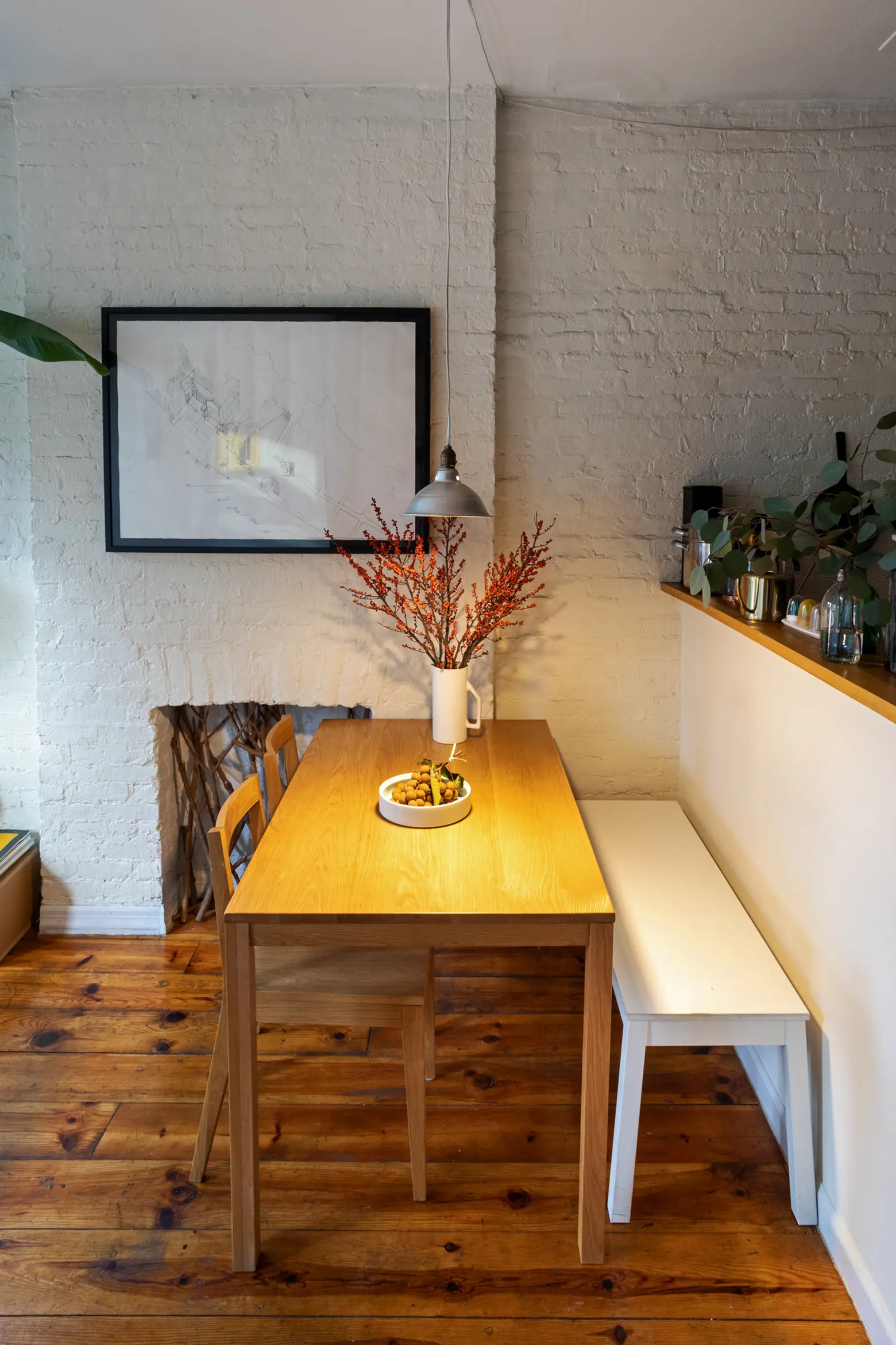 All of Nicky’s wood furniture, like the dining and coffee tables, was made by her friends Lulu and Hansley at Akron Street. Their company designs furniture for small spaces.
All of Nicky’s wood furniture, like the dining and coffee tables, was made by her friends Lulu and Hansley at Akron Street. Their company designs furniture for small spaces.
Speaking of eating! For over two years, you hosted a dinner series called Table for Six in your apartment. What was that like?
It was a lot of fun to run a “restaurant incognito” from my tiny apartment. I cooked at the beginning and quickly the project attracted some young chefs, so we cooked together. More and more people begin to realize the importance of making time to prepare food and share with people you care about. It’s super encouraging to see just how far we can push home cooking to be an elevated, social experience. We met a lot of friends and collaborators from the Table For Six project, many of whom we are still working with today.
All photos taken by James and Karla Murray exclusively for 6sqft. Photos are not to be reproduced without written permission from 6sqft.
